#USB-C VR battery strap
Explore tagged Tumblr posts
Text
Small question...

I'm trying to figure out a long-term solution for the VR headset.
The remaining issues are... the strap, power, and audio solutions.
The power solution has pretty much been figured out, but it's the other two that are where it gets... interesting.
The two best options have different catches to their design.
For Audio, I have the Logitech Chorus vs Rebuff Reality VR Ears.
For Straps, I currently have either the official strap with battery or the Bobo VR M2 Pro. The straps I can use are dictated by the audio solution.
The Chorus will only work with the official strap and Battery and integrates into the USB C connection. Perfect weight balance and a simple setup. Just slide, plug, and go.
The Rebuff Reality works with any strap, uses a 3.5 MM connection, and can connect to a PC. Requires a separate charging solution and may cause weight balance issues.
Right now, I'm kind of leaning towards the Chorus as it seems to be the least hassle over the long run.
Any thoughts?
0 notes
Text
HTC Vive Focus 3 Review: Latest all-in-one Virtual Reality (VR) Headset
The HTC Vive Focus 3 is the company’s latest all-in-one virtual reality (VR) headset, succeeding the Vive Focus Plus, and it’s rather impressive.
With a combined 5K resolution across twin screens, a 90hz refresh rate, and a 120-degree field of view, it offers a spec sheet that rivals the previous generation of PC-powered headsets (FOV). Despite this, the Vive Focus 3 is completely wireless, with all tracking and computing handled onboard, just like its predecessor.

With a few dips here and there, the screen is very sharp, and the performance is seamless. HTC has also managed to do rid of some of the nausea-inducing visual oddities that have plagued previous all-in-one headsets.
Price and availability
The Vive Focus 3 isn’t cheap, but given that it’s a corporate VR headset, that’s to be expected.
The smartphone will be available for $1,300, excluding VAT, starting June 27. The headset, an AC adapter, two controllers, splitter cable, and lens cleaning cloth are all included in this pricing.
It’s worth noting that the controllers aren’t available individually at this time, which could provide difficulty in the event of a malfunction.
Design
It’s difficult to make VR headsets look slim, yet HTC manages to do so admirably. The Vive Focus 3 has a more appealing design than its predecessor.
The black magnesium alloy chassis is just the perfect amount of curvy, and it works well with the faux-leather face gasket and padding to produce a sleek corporate aesthetic; it’s the polar opposite of the porcelain white Focus Plus.
The new model is around 20% lighter than the previous edition, which will come as a welcome relief to anyone who has ever worn a battery-powered VR headset. Despite its weight, the gadget feels solid, which is critical for use cases that require numerous people to collaborate.
Unlike many headsets on the market, the Focus 3’s lightweight design makes it comfortable to wear for long periods of time. HTC also optimized weight distribution to reduce neck strain by placing the battery behind the head as a counterbalance.
The most difficult aspect of the project was getting the fit right, especially with glasses on. You’ll experience some disorienting blur unless the head strap and padding are properly fitted and the IPD is properly set.
The battery life of the Focus 3 is also a deterrent to a marathon session; after a few hours of use, the Focus 3 ran out of juice. The ease with which a fresh one may be switched in, however, ensures that a quick shift between meetings is possible. If only the headset came with more than one battery!
The Focus 3 comes with a pair of new infrared controllers, which replace the trackpad with a standard joystick and buttons. The joystick, in particular, is a nice addition, as it offers a more familiar alternative to teleportation for moving about the virtual world.
The controllers are lightweight and comfortable in hand, with tactile and pleasant buttons and triggers. The buttons and joystick are arranged in such a way that everything is easy to reach, unlike the side button on the Vive Pro controllers.
The Focus 3 controllers can also be recharged through USB-C, which addresses a prevalent issue with previous AAA battery-powered integration.
Performance
Although the Vive Focus 3 will easily handle some games (we found that a multiplayer FPS game called Hyper Dash worked smoothly enough), HTC has made its intentions for the new headset very clear.
The Focus 3 is designed to address a void in the market for a business VR headset that is both accessible and robust, as well as providing top-tier performance for corporate use cases (e.g., 3D modeling).
The Focus 3 reaches astounding levels of performance and fidelity for an all-in-one headset, thanks to a modified version of the Qualcomm Snapdragon XR2 platform pushed to its limits by a 15W copper heat pipe and high-performance fan.
The 5K resolution (2448 x 2448 pixels per eye) and 90hz refresh rate provide a silky smooth experience, while the large 120-degree FOV feels more natural. The improvement over prior generations is especially obvious when it comes to reading small print, which was previously nearly impossible.
The Vive Focus 3 is a marvel because it was once inconceivable that any competent VR headset could operate wirelessly without the support of a top-of-the-line PC.
The primary limitation is that this level of performance is not consistently maintained. Surprisingly, the foyer section, Virtual Reality System 2.0, was where we had the most problems. When returning from an application, we were occasionally faced with a terrible frame-rate decrease and screen-tearing.
When casting content to a nearby screen, we found more performance issues, which is a function that businesses are likely to want to employ at trade exhibitions or during training sessions. While the broadcast was mostly smooth, it did experience some glaring latency from time to time.
When running specific apps, the fan whirrs at an unsettlingly high volume, albeit this is less of an issue if you use headphones to listen to the audio. If you’re an audiophile, this method is highly advised, as the in-built speakers are notoriously tinny and bass-deficient.
It’s also worth mentioning that, for use cases requiring substantial simulation, content can be streamed to the headset from a PC. The review model, on the other hand, was not designed to put this functionality to the test.
Conclusion
The Vive Focus 3 is an incredibly fantastic piece of technology that solves many problems that have plagued VR headsets since their introduction. It’s light and comfy, with a quick and easy setup and a gorgeous screen.
However, we were dismayed to notice some performance issues, particularly in the main lobby area. Despite HTC’s efforts to improve resolution and frame rate in order to reduce unpleasant side effects (such as nausea and migraines), inconsistent performance is a blemish on the record.
Inevitably, the steep price tag will be a deterrent, limiting the audience to a select group of enterprises with significant pockets. However, for areas like architecture or healthcare that could benefit from a high-quality headset designed for long-term usage, there is currently nothing that compares to the Vive Focus 3.
I am extremely passionate about blogging, running websites, and creating content. I have managed to turn my passion into a profession, and blogging has managed to teach me a lot about technology and myself. I write blog posts, instruction manuals, news releases, and technical descriptions, and reviews for many websites such as central.bitdefender.com
Source: HTC Vive Focus 3 Review: Latest all-in-one Virtual Reality (VR) Headset
0 notes
Text
Oculus Quest 2 Review: The Best Headset for Everyone
Oculus Quest 2
9.00 / 10
Read Reviews
Read More Reviews
Read More Reviews
Read More Reviews
Read More Reviews
Read More Reviews
Read More Reviews
Read More Reviews
Read More Reviews
Read More Reviews
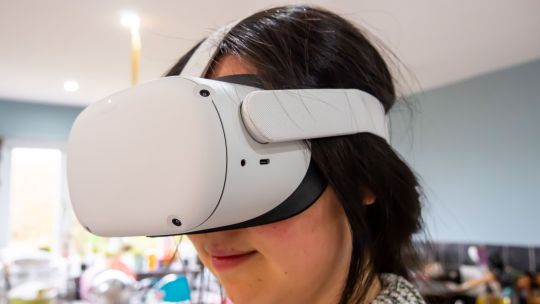
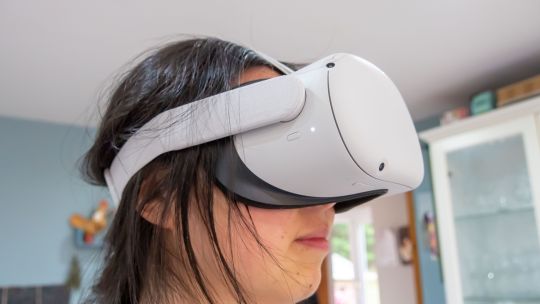
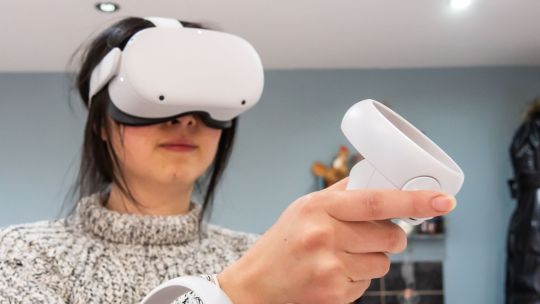

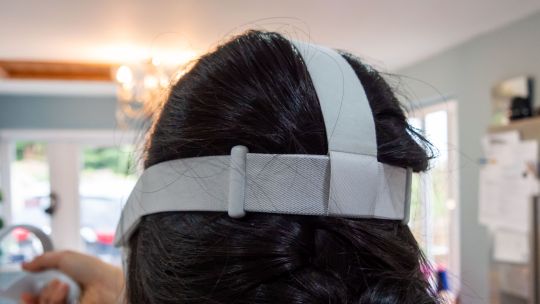
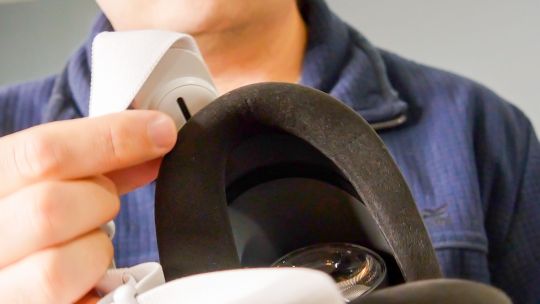



See on amazon
Not only is the Oculus Quest 2 the best standalone VR headset yet, it's also the best budget option for PC gaming thanks to the Oculus Link technology. At the incredible price point of $300, it's an essential purchase for anyone looking to get into VR. Existing Oculus Quest owners might be disappointed by the black levels, but we think the increased resolution and responsiveness is well worth the trade-off.
Specifications
Brand: Oculus (Facebook)
Resolution (per eye): 1832 x 1920px
Display Type: RGB-stripe LCD
Storage: 64 / 256 GB
Connectivity: Wi-Fi 6 and 802.11ac, Bluetooth 5.0, USB-C, 3.5mm Stereo Out
Battery Life: 2-3 Hours
Tracking Technology: Inside out cameras on the headset
Audio: Built-in speakers
Weight: 1.1 lbs
Pros
Hand-tracking is reliable, though not all software supports it yet
RGB-stripe LCD adds resolution and pixel density, eliminating any screen-door effect
Incredible value for a standalone headset, and a great buget choice for PC gaming
Cons
Audio is terrible, but easy enough to plug in your own headphones
Black levels are worse than the original Quest
Buy This Product

Oculus Quest 2 amazon
Shop
<![CDATA[ // Bottom var galleryThumbs1 = new Swiper('.gallery-thumbs-1', { spaceBetween: 10, slidesPerView: 10, freeMode: true, watchSlidesVisibility: true, watchSlidesProgress: true, centerInsufficientSlides: true, allowTouchMove: false, preventClicks: false, breakpoints: { 1024: { slidesPerView: 6, } }, }); // Top var galleryTop1 = new Swiper('.gallery-top-1', { spaceBetween: 10, allowTouchMove: false, loop: true, preventClicks: false, breakpoints: { 1024: { allowTouchMove: true, } }, navigation: { nextEl: '.swiper-button-next', prevEl: '.swiper-button-prev', }, thumbs: { swiper: galleryThumbs1 } }); ]]>
An incredible resolution, powerful mobile processor, and extensive software library make the Oculus Quest 2 the best wireless VR headset yet. And if you have the right cable and a gaming PC, it's also the best budget PC VR headset. That's quite an achievement–especially at a price point of just $300.
Read on to find out why the Oculus Quest 2 is the best mobile VR experience yet.
youtube
Why Should You Trust My Opinion?
I've been following 3D display technologies since the early 2000s, starting with NVidia's 3DVision. I backed the original Oculus Development Kit Kickstarter after reading about it from an MTBS3D forum member. From the moment it arrived, I knew it would change gaming forever, despite only a single demo being available.

I kept throwing money at VR, on the Dev Kit 2, consumer edition Rift, HTC Vive (eventually with wireless upgrade), Oculus Go, and Oculus Quest. My current headset of choice is the Valve Index, though I probably use the Quest more than anything because of its convenience.
Note the absence of the Rift S. I knew at the time it was a dead-end for Oculus, bridging the gap while they perfected Oculus Link technology. I was right, and Facebook has confirmed that the Rift hardware ends here, with all future efforts pushed to the mobile space.
We’re going to focus on standalone VR headsets moving forward. We’ll no longer pursue PC-only hardware, with sales of Rift S ending in 2021. That said, the Rift Platform isn’t going anywhere. In fact, we've seen significant growth in PC VR via Oculus Link, and the Rift Platform will continue to grow while offering high-end PC VR experiences like Lone Echo II and Medal of Honor: Above and Beyond well into the future. - Oculus.com
Quest 2 Technical Specs and Design
Aesthetically, the Quest 2 has undergone one significant change: it's now white. This is undoubtedly the result of numerous psychological studies that told Facebook that white was a more acceptable color for consumer electronics destined for use in the living room. And they're probably right, given that sales of the Oculus Quest 2 are so far outstripping the original many times over. Other than that, the shape and overall design of the Quest 2 is relatively unchanged.

It ships with a flimsy head strap that tends to fall off in vigorous use and results in a weight distribution that's uncomfortably forward-heavy on the face. While Oculus sells a replacement "Elite" strap with a ratcheting lock, it's overpriced, and early reports indicate it's poorly made and prone to snapping. You'll find a better one on AliExpress.

There are two versions of the Quest 2 available to purchase, differing only in the amount of storage space. The basic model at $300 has 64GB, while $400 will get you significantly more at 256GB. If you plan only to play games, 64GB is plenty enough. If you want to store big movies to watch offline when traveling, 256GB will likely be your best bet.
You can expect anywhere from two to three hours of use from the battery on the Oculus Quest 2. Two hours if you're playing games, three if you're watching movies. To ensure there's any battery left when you next pick it up, remember to power off the device completely by holding the power button and selecting "shutdown." Merely taking the headset off will turn the screen off, but the system will be paused and run the battery down in a day or so. The Elite Strap includes a battery which will give another two to three hours. There is no battery limitation when tethered to a PC.

A USB-C charging cable and adaptor are also included in the package, though it's not long enough to be used for Oculus Link. A glasses adaptor is provided for those who find the headset is bumping up against their own lenses, which extends the face plate about 1/4 inch further out. It's easy to fit as the faceplate is simple to remove.
Visual Quality
The screen inside the Oculus Quest is perhaps the most significant change compared to the Quest, and it's not all for the better. Running at a higher overall resolution of 1832x1920 pixels per eye, compared to 1440x1600 on the Quest, Facebook opted for a single RGB-stripe LCD panel. The RGB-stripe configuration results in pixels that are closer together, and therefore higher density. This eliminates any so-called "screen door effect" and generally gives a higher perceived resolution (on top of a higher actual and ix resolution). Combined, it results in an incredibly sharp display. The display is also now capable of running at 90Hz, though this is not enabled by default, and most games don't take advantage of it yet. If I sound like I'm glossing over this point, it's because the 75Hz refresh has never bothered me.
Unfortunately, the choice of a single panel LCD, rather than dual-panel OLEDs found in the original Quest, has two significant drawbacks.

The first is the lack of real IPD (inter-pupillary distance) adjustment. Facebook has compromised and provided three discrete physical IPD settings, which you can click into place. These should cover everyone from 58mm to 68mm, though only those with the entirely average 63mm will get the best experience, and there's no software adjustment to accompany this—it's physically moving the position of the lenses. Therefore the area of the image you're focusing on also slightly changes. Sadly I can't comment on how non-ideal it is for other IPDs, as I fall into the category of entirely average.
The other drawback of using an LCD panel is the black levels. In short, they're more dark grey than black. If you play horror games, such as Walking Dead: Saints and Sinners, or enjoy watching darker movies in your personal VR cinema, you may notice it more than others.
To be clear, these are minor complaints. Other improvements in the resolution and pixel density far outweigh any perceived issue with black levels.
Audio Quality
The audio system feels upgraded but still terrible. Sound emanates from somewhere within the headset and is piped to your ears via the plastic clips on the side. Unfortunately, I'd forgotten how bad it sounds, having replaced the head strap on my original Quest with some 3D printed adaptors and the HTC Vive Deluxe Audio Strap.

Though the sound quality is clean and gets pretty loud, with no muffled voices or distortion, it completely lacks bass. On top of that, there is no audio isolation at all. Partly, this is by design: Facebook wants you to stay somewhat connected to the outside world. But it works both ways, and the outside world can hear everything you do in VR.
Of course, you can fix the audio easily, so it's not a dealbreaker. A single 3.5mm stereo jack on the left-hand side enables you to plug in earbuds or your favorite cans. But that's some ugly wires on what is other an elegantly minimalist design.
Controllers
The controllers are also superficially unchanged other than being white now, with the same selection of capacitive buttons, a thumbstick, trigger, and grip button. This configuration means existing library software should work as is, with little required for developers to update code. A single AA battery powers each controller, with a ring of invisible tracking LEDs.

Upon closer examination, they appear to be slightly larger than the original controllers, though not noticeably so in use. I still find my hands cramping up after extended sessions. A capacitive thumb rest has been added.
Tracking, Passthrough, and Hands
Though the tracking technology also appears to be unchanged–with four cameras on the headset watching the LEDs embedded in the controller–it certainly feels smoother. The additional processing in the CPU results in less overall tracking hiccups, such that any blame for missed blocks in BeatSaber is now squarely on your shoulders.
Hand-tracking too feels distinctly smoother and more reliable. It feels like a viable way to interact with the system now, though not all software has been updated to use it.

Also greatly improved is the camera passthrough feature. A quick double-tap on the side of the headset immediately reveals your surroundings, so you can step over the cat, take a sip of coffee, or inflict a brutal tickling on your child who thinks daddy can't see anything when he's wearing his headset.
Got a PC? Plug It In with Oculus Quest Link
While the Oculus Quest 2 delivers an incredible wireless VR experience, the graphical quality will never compare to those rendered on a desktop gaming PC. But with Quest 2, you needn't choose. Just plug in the Quest 2 using a USB-C to USB-C or USB-A cable, and you can enjoy full access to the desktop Oculus software or vast Steam library. Graphics will be rendered on your PC and sent to the Oculus Quest 2, just like any other tethered PC headset. I expect you're asking yourself, "can I play Half-Life Alyx on the Oculus Quest 2?!" and the answer is a resounding yes. Valve hasn't locked its games to any particular headset, and with full SteamVR access and native controller support, everything works as expected. And it's incredible.

Oculus sells a branded fiber-optic Link cable for the best quality, though it's quite pricey at around $90. This Belkin cable is also officially compatible. If you have a USB2.0 cable (strangely, not all USB-C cables are rated for USB3.0 transfer speeds), you can still use Oculus Link, though the visual clarity will be somewhat degraded.
You probably think this is a bad experience compared to a "normal" wired headset. While it doesn't quite compare to the $1000 Index, it's certainly not what I'd call subpar. I've used a lot of tethered VR headsets and would be quite happy using just the Quest 2.
As for Quest Link latency: it's imperceivable. Even in fast-paced FPS games, or rhythm action titles like Beat Saber, I couldn't notice any latency. For comparison sake, I usually use a Valve Index tethered to my gaming PC.
Games on Oculus Quest
I tested in three games: Rec Room, Beat Saber, and Walking Dead: Saints and Sinners. The former two I have many hours of playing across platforms, so I'm intimately familiar with them. The latter I bought to compare directly the Quest 1 and 2, with fresh pair of eyes.
Overall, it was a mixed bag of results.
Beat Saber appears to be updated, and as far as I can tell, it takes full advantage of the resolution bump. The strobing lights and bright contrasts work particularly well on this type of display.
Rec Room, however, felt like legacy software. Though it's opened some additional maps for Quest 2 users to take advantage of additional graphical capabilities, the game appears to run at a lower resolution than the Quest 2 is capable of. The screen felt darker, with colors more muted than the Quest 1. I then compared to the SteamVR version of RecRoom over Oculus Link, and sure enough, it was a world of difference with bright visuals, even over a USB2 cable.

Walking Dead: Saints and Sinners is about as gloomy as a game can get, played mostly under cover of darkness, with fog effects galore. And sure enough, the black levels here were a murky dark grey at best. Swapping back and forth between Quest 1 and 2 highlights the screen differences. That said, given a choice between higher resolution or better black levels, I'd choose the higher resolution every time.

Of course, it should go without saying that these are my subjective opinions only, and your experience may vary.
The F-Word: Facebook
We can't review the Oculus Quest 2 and not mention the requisite Facebook account. While the Quest 2 has excellent hand-tracking, that's probably not the only thing it's tracking. As is written clearly on the box, this device requires a Facebook account. No ifs, no buts, no workarounds, no opt-out. And not just for social integrations (as was previously the case), but to merely activate and use your device.
If you're thinking, "that's ok, I'll just make a fake account," then think again: many users have found their fake accounts deleted and have lost access to all their Oculus purchases. Not only do you need a Facebook account to use the Quest 2, but you also need a real, active account. You'll be asked to submit a photo ID if Facebook suspects shenanigans.
Precisely what privacy implications this will hold in the future is yet to be determined. Will Facebook be able to watch everything you do in VR? It seems unlikely, though it is technically possible. For now, Facebook has stated that it'll be strongly moderating user actions within the new Horizons social VR space, currently in beta for selected users. A rolling camera (similar to a car dashcam) will record everything you do, and if another user reports you, the relevant footage will be saved and uploaded for manual review. Facebook employees will also be able to drop in on your at any point and remain invisible to observe your behavior. While this sounds terrifying to some, it may be precisely what social VR spaces need to succeed. The potential for long-term psychological harm in online social networks is somewhat limited when interactions are text-only. In VR's physical space, they're on a whole other level.

Personally, I couldn't care less. I merged my Facebook and Oculus account a long time ago. If I did have a dark alter-ego where I live out sadistic fantasies or troll feminist gamers, I probably wouldn't be doing it anywhere near the account where my mum is.
But for those of you who are entirely Facebook averse, I doubt the technological progress that the Quest 2 brings will be enough to convince you otherwise. In which case, consider yourself out of the mobile VR game because there isn't a worthwhile alternative.
Should You Upgrade From the Quest?
The original Oculus Quest felt like a mid-range smartphone unwillingly coerced into doing double duty as a VR headset. It was still the best VR experience at the time of release, and throughout its lifecycle, no other viable contender stepped up.
The Quest 2, however, flies along, doing whatever it's told with glee. While the Quest's hardware inadequacies remain unchanged (the horrendous audio and uncomfortable headset), it's understandable that some compromises had to be made to get a high-resolution wireless all-in-one VR headset down to the frankly ludicrous price point of $300. Facebook has delivered on its promise of making VR accessible for the masses, and we should praise it for that endeavor. If we need to give up a little privacy for that, then so be it. VR's ability to teleport us to anywhere we can dream of is a powerful tool for change, and I want everyone to have that opportunity.
As for whether you should upgrade? It's debatable. Personally, the resolution bump, more powerful processor, and generally more responsive UI throughout are more than worth it. I would have happily paid $500 for a "Pro" version of the Quest 2, with an OLED screen and possibly better audio, but I'm pleased with the upgrade. I'll add some padding to the controllers and replace the head strap; such is the convenience of a world with 3D printing. I'm not a massive fan of horror movies or scary games—there's enough horror in real life. I want my VR experiences to be bright and colorful. But if you know you're a stickler for black levels, you might want to hold off.
The Oculus Quest 2 isn't just the best mobile headset, with a gimmicky feature that lets you plug it into a PC. It's the best budget PC VR headset, too. While it may be a questionable upgrade for some original Quest owners, it's the best choice if you don't already have a VR headset. You will not be disappointed.
Do You Have Oculus Quest 2 Questions? We've Got Answers!
How much do Oculus Quest games cost?
Games in the Oculus Quest library cost anywhere from nothing (Rec Room, with in-app purchases for cosmetic items that you can also buy with earned currency) to $19 per month for Supernatural VR, a fitness game with licensed music. Most fall between the $5–$20 mark.
How Big Are Oculus Quest 2 Games?
If you're considering whether to buy the 64GB or 256GB Oculus Quest 2, you should know that even the biggest Quest game is around 8GB, meaning you can comfortably fit several on the 64GB model. Most games (and apps) are under 1GB. If you just plan to play games and not store large movies, 64GB is plenty enough.
How to Stream Oculus Quest to Twitch?
By default, you can stream to the Oculus app on your phone, a Chromecast 3 device, or your personal Facebook page. For anything else, like Twitch, you'll need some cables and a PC. Using a USB-C cable, the ScrCpy utility (built into SideQuest) will display the visuals, while you'll also need a stereo audio cable to capture sound. You can then pipe this through the usual desktop app like OBS and out to your platform of choice.
Can I Play Custom BeatSaber Songs on Quest 2?
Yes, but it's not a simple process. You'll need to first enable Developer Mode and install SideQuest, a third-party unofficial app store and method of adding generic APKs to your Quest. Then you'll need to install BMBF, which includes the BeatSync mod. This will give you access to custom songs from BSaber.
How Does Oculus Quest 2 Tracking Work?
The Quest 2 features four small cameras embedded in the headset. These watch your play space to figure out how your head is moving. At the same time, there is a ring of infra-red LEDs on each controller, which only the headset can see. Combined, you have full freedom of movement and motion controls in a standalone package. A virtual Guardian wall will prevent you from leaving the play area. You can either draw this using the passthrough cameras, or opt for a standing-only play area (in which you can turn around, but stay in one spot). The wide-angle cameras situated on the sides and bottom of the Quest 2 ensure ample coverage. While moving your controller around your back will force it to lose tracking, this rarely occurs in practice. The Oculus Quest 2 tracking cannot fully function in darkness: it must see your environment. If it's unable to track your surroundings, the system will revert to a 3DOF mode, whereby you can only rotate the headset and have no positional tracking. This mode is fine for watching movies in a dark environment.
Does Oculus Quest 2 Have Full Body Tracking?
No. While the Quest 2 is capable of tracking your hands (without using controllers), it's not able to track your feet or the rest of your body. Full-body tracking is only possible using third-party hardware in tethered Oculus Link mode.
Oculus Quest 2 Review: The Best Headset for Everyone posted first on grassroutespage.blogspot.com
0 notes
Text
Oculus Quest 2 Review: The Best Headset for Everyone
Oculus Quest 2
9.00 / 10
Read Reviews
Read More Reviews
Read More Reviews
Read More Reviews
Read More Reviews
Read More Reviews
Read More Reviews
Read More Reviews
Read More Reviews
Read More Reviews
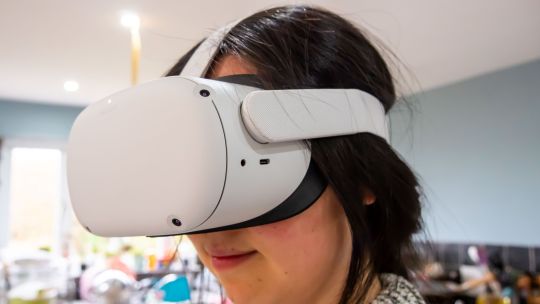
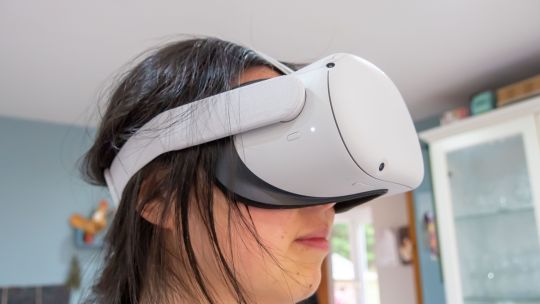
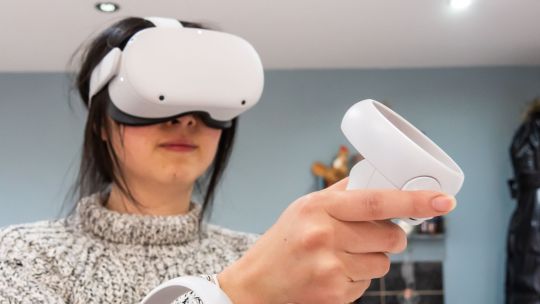
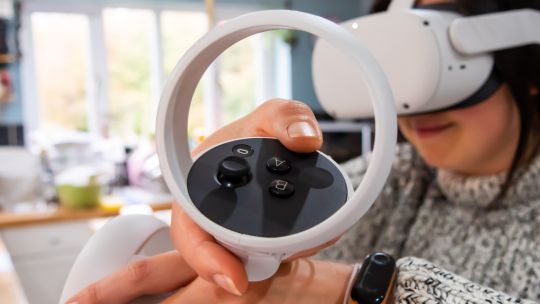
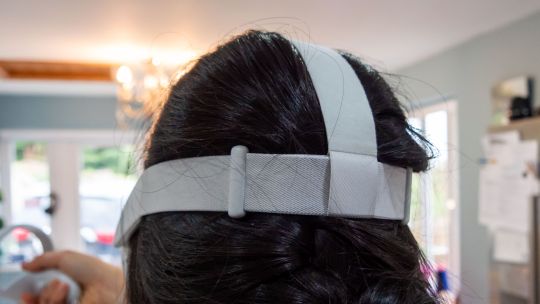
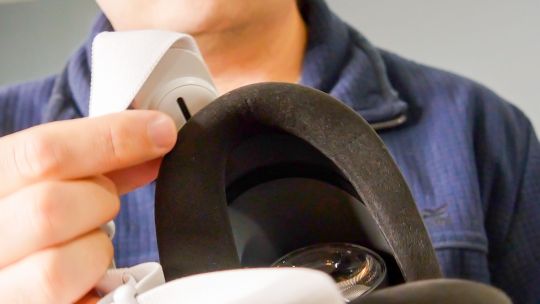
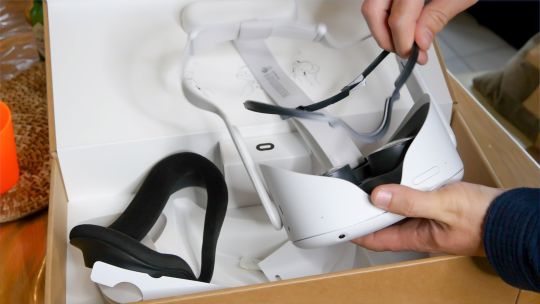
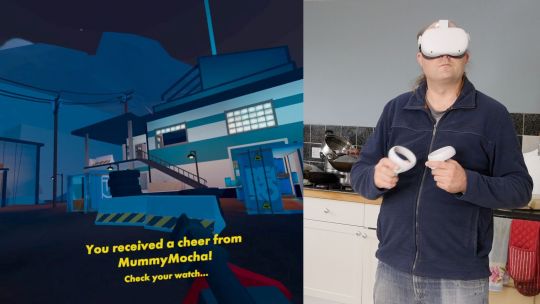
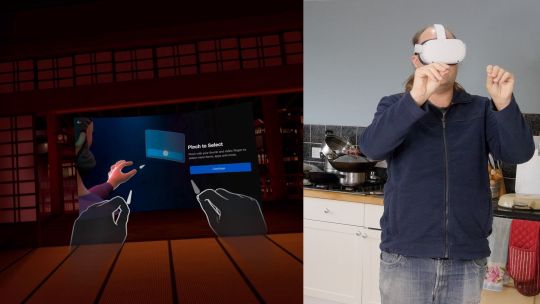
See on amazon
Not only is the Oculus Quest 2 the best standalone VR headset yet, it's also the best budget option for PC gaming thanks to the Oculus Link technology. At the incredible price point of $300, it's an essential purchase for anyone looking to get into VR. Existing Oculus Quest owners might be disappointed by the black levels, but we think the increased resolution and responsiveness is well worth the trade-off.
Specifications
Brand: Oculus (Facebook)
Resolution (per eye): 1832 x 1920px
Display Type: RGB-stripe LCD
Storage: 64 / 256 GB
Connectivity: Wi-Fi 6 and 802.11ac, Bluetooth 5.0, USB-C, 3.5mm Stereo Out
Battery Life: 2-3 Hours
Tracking Technology: Inside out cameras on the headset
Audio: Built-in speakers
Weight: 1.1 lbs
Pros
Hand-tracking is reliable, though not all software supports it yet
RGB-stripe LCD adds resolution and pixel density, eliminating any screen-door effect
Incredible value for a standalone headset, and a great buget choice for PC gaming
Cons
Audio is terrible, but easy enough to plug in your own headphones
Black levels are worse than the original Quest
Buy This Product

Oculus Quest 2 amazon
Shop
// Bottom var galleryThumbs1 = new Swiper('.gallery-thumbs-1', { spaceBetween: 10, slidesPerView: 10, freeMode: true, watchSlidesVisibility: true, watchSlidesProgress: true, centerInsufficientSlides: true, allowTouchMove: false, preventClicks: false, breakpoints: { 1024: { slidesPerView: 6, } }, }); // Top var galleryTop1 = new Swiper('.gallery-top-1', { spaceBetween: 10, allowTouchMove: false, loop: true, preventClicks: false, breakpoints: { 1024: { allowTouchMove: true, } }, navigation: { nextEl: '.swiper-button-next', prevEl: '.swiper-button-prev', }, thumbs: { swiper: galleryThumbs1 } });
An incredible resolution, powerful mobile processor, and extensive software library make the Oculus Quest 2 the best wireless VR headset yet. And if you have the right cable and a gaming PC, it's also the best budget PC VR headset. That's quite an achievement–especially at a price point of just $300.
Read on to find out why the Oculus Quest 2 is the best mobile VR experience yet.
youtube
Why Should You Trust My Opinion?
I've been following 3D display technologies since the early 2000s, starting with NVidia's 3DVision. I backed the original Oculus Development Kit Kickstarter after reading about it from an MTBS3D forum member. From the moment it arrived, I knew it would change gaming forever, despite only a single demo being available.
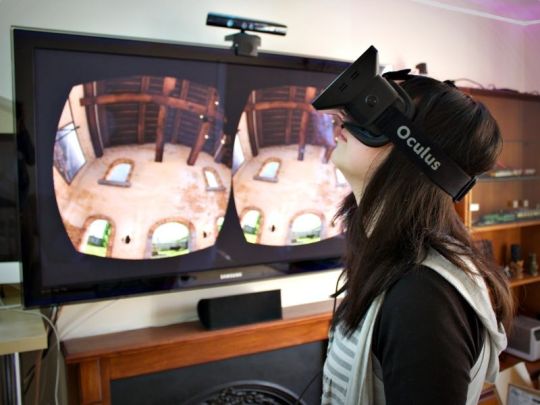
I kept throwing money at VR, on the Dev Kit 2, consumer edition Rift, HTC Vive (eventually with wireless upgrade), Oculus Go, and Oculus Quest. My current headset of choice is the Valve Index, though I probably use the Quest more than anything because of its convenience.
Note the absence of the Rift S. I knew at the time it was a dead-end for Oculus, bridging the gap while they perfected Oculus Link technology. I was right, and Facebook has confirmed that the Rift hardware ends here, with all future efforts pushed to the mobile space.
We’re going to focus on standalone VR headsets moving forward. We’ll no longer pursue PC-only hardware, with sales of Rift S ending in 2021. That said, the Rift Platform isn’t going anywhere. In fact, we've seen significant growth in PC VR via Oculus Link, and the Rift Platform will continue to grow while offering high-end PC VR experiences like Lone Echo II and Medal of Honor: Above and Beyond well into the future. - Oculus.com
Quest 2 Technical Specs and Design
Aesthetically, the Quest 2 has undergone one significant change: it's now white. This is undoubtedly the result of numerous psychological studies that told Facebook that white was a more acceptable color for consumer electronics destined for use in the living room. And they're probably right, given that sales of the Oculus Quest 2 are so far outstripping the original many times over. Other than that, the shape and overall design of the Quest 2 is relatively unchanged.

It ships with a flimsy head strap that tends to fall off in vigorous use and results in a weight distribution that's uncomfortably forward-heavy on the face. While Oculus sells a replacement "Elite" strap with a ratcheting lock, it's overpriced, and early reports indicate it's poorly made and prone to snapping. You'll find a better one on AliExpress.

There are two versions of the Quest 2 available to purchase, differing only in the amount of storage space. The basic model at $300 has 64GB, while $400 will get you significantly more at 256GB. If you plan only to play games, 64GB is plenty enough. If you want to store big movies to watch offline when traveling, 256GB will likely be your best bet.
You can expect anywhere from two to three hours of use from the battery on the Oculus Quest 2. Two hours if you're playing games, three if you're watching movies. To ensure there's any battery left when you next pick it up, remember to power off the device completely by holding the power button and selecting "shutdown." Merely taking the headset off will turn the screen off, but the system will be paused and run the battery down in a day or so. The Elite Strap includes a battery which will give another two to three hours. There is no battery limitation when tethered to a PC.

A USB-C charging cable and adaptor are also included in the package, though it's not long enough to be used for Oculus Link. A glasses adaptor is provided for those who find the headset is bumping up against their own lenses, which extends the face plate about 1/4 inch further out. It's easy to fit as the faceplate is simple to remove.
Visual Quality
The screen inside the Oculus Quest is perhaps the most significant change compared to the Quest, and it's not all for the better. Running at a higher overall resolution of 1832x1920 pixels per eye, compared to 1440x1600 on the Quest, Facebook opted for a single RGB-stripe LCD panel. The RGB-stripe configuration results in pixels that are closer together, and therefore higher density. This eliminates any so-called "screen door effect" and generally gives a higher perceived resolution (on top of a higher actual and ix resolution). Combined, it results in an incredibly sharp display. The display is also now capable of running at 90Hz, though this is not enabled by default, and most games don't take advantage of it yet. If I sound like I'm glossing over this point, it's because the 75Hz refresh has never bothered me.
Unfortunately, the choice of a single panel LCD, rather than dual-panel OLEDs found in the original Quest, has two significant drawbacks.

The first is the lack of real IPD (inter-pupillary distance) adjustment. Facebook has compromised and provided three discrete physical IPD settings, which you can click into place. These should cover everyone from 58mm to 68mm, though only those with the entirely average 63mm will get the best experience, and there's no software adjustment to accompany this—it's physically moving the position of the lenses. Therefore the area of the image you're focusing on also slightly changes. Sadly I can't comment on how non-ideal it is for other IPDs, as I fall into the category of entirely average.
The other drawback of using an LCD panel is the black levels. In short, they're more dark grey than black. If you play horror games, such as Walking Dead: Saints and Sinners, or enjoy watching darker movies in your personal VR cinema, you may notice it more than others.
To be clear, these are minor complaints. Other improvements in the resolution and pixel density far outweigh any perceived issue with black levels.
Audio Quality
The audio system feels upgraded but still terrible. Sound emanates from somewhere within the headset and is piped to your ears via the plastic clips on the side. Unfortunately, I'd forgotten how bad it sounds, having replaced the head strap on my original Quest with some 3D printed adaptors and the HTC Vive Deluxe Audio Strap.

Though the sound quality is clean and gets pretty loud, with no muffled voices or distortion, it completely lacks bass. On top of that, there is no audio isolation at all. Partly, this is by design: Facebook wants you to stay somewhat connected to the outside world. But it works both ways, and the outside world can hear everything you do in VR.
Of course, you can fix the audio easily, so it's not a dealbreaker. A single 3.5mm stereo jack on the left-hand side enables you to plug in earbuds or your favorite cans. But that's some ugly wires on what is other an elegantly minimalist design.
Controllers
The controllers are also superficially unchanged other than being white now, with the same selection of capacitive buttons, a thumbstick, trigger, and grip button. This configuration means existing library software should work as is, with little required for developers to update code. A single AA battery powers each controller, with a ring of invisible tracking LEDs.

Upon closer examination, they appear to be slightly larger than the original controllers, though not noticeably so in use. I still find my hands cramping up after extended sessions. A capacitive thumb rest has been added.
Tracking, Passthrough, and Hands
Though the tracking technology also appears to be unchanged–with four cameras on the headset watching the LEDs embedded in the controller–it certainly feels smoother. The additional processing in the CPU results in less overall tracking hiccups, such that any blame for missed blocks in BeatSaber is now squarely on your shoulders.
Hand-tracking too feels distinctly smoother and more reliable. It feels like a viable way to interact with the system now, though not all software has been updated to use it.

Also greatly improved is the camera passthrough feature. A quick double-tap on the side of the headset immediately reveals your surroundings, so you can step over the cat, take a sip of coffee, or inflict a brutal tickling on your child who thinks daddy can't see anything when he's wearing his headset.
Got a PC? Plug It In with Oculus Quest Link
While the Oculus Quest 2 delivers an incredible wireless VR experience, the graphical quality will never compare to those rendered on a desktop gaming PC. But with Quest 2, you needn't choose. Just plug in the Quest 2 using a USB-C to USB-C or USB-A cable, and you can enjoy full access to the desktop Oculus software or vast Steam library. Graphics will be rendered on your PC and sent to the Oculus Quest 2, just like any other tethered PC headset. I expect you're asking yourself, "can I play Half-Life Alyx on the Oculus Quest 2?!" and the answer is a resounding yes. Valve hasn't locked its games to any particular headset, and with full SteamVR access and native controller support, everything works as expected. And it's incredible.

Oculus sells a branded fiber-optic Link cable for the best quality, though it's quite pricey at around $90. This Belkin cable is also officially compatible. If you have a USB2.0 cable (strangely, not all USB-C cables are rated for USB3.0 transfer speeds), you can still use Oculus Link, though the visual clarity will be somewhat degraded.
You probably think this is a bad experience compared to a "normal" wired headset. While it doesn't quite compare to the $1000 Index, it's certainly not what I'd call subpar. I've used a lot of tethered VR headsets and would be quite happy using just the Quest 2.
As for Quest Link latency: it's imperceivable. Even in fast-paced FPS games, or rhythm action titles like Beat Saber, I couldn't notice any latency. For comparison sake, I usually use a Valve Index tethered to my gaming PC.
Games on Oculus Quest
I tested in three games: Rec Room, Beat Saber, and Walking Dead: Saints and Sinners. The former two I have many hours of playing across platforms, so I'm intimately familiar with them. The latter I bought to compare directly the Quest 1 and 2, with fresh pair of eyes.
Overall, it was a mixed bag of results.
Beat Saber appears to be updated, and as far as I can tell, it takes full advantage of the resolution bump. The strobing lights and bright contrasts work particularly well on this type of display.
Rec Room, however, felt like legacy software. Though it's opened some additional maps for Quest 2 users to take advantage of additional graphical capabilities, the game appears to run at a lower resolution than the Quest 2 is capable of. The screen felt darker, with colors more muted than the Quest 1. I then compared to the SteamVR version of RecRoom over Oculus Link, and sure enough, it was a world of difference with bright visuals, even over a USB2 cable.

Walking Dead: Saints and Sinners is about as gloomy as a game can get, played mostly under cover of darkness, with fog effects galore. And sure enough, the black levels here were a murky dark grey at best. Swapping back and forth between Quest 1 and 2 highlights the screen differences. That said, given a choice between higher resolution or better black levels, I'd choose the higher resolution every time.

Of course, it should go without saying that these are my subjective opinions only, and your experience may vary.
The F-Word: Facebook
We can't review the Oculus Quest 2 and not mention the requisite Facebook account. While the Quest 2 has excellent hand-tracking, that's probably not the only thing it's tracking. As is written clearly on the box, this device requires a Facebook account. No ifs, no buts, no workarounds, no opt-out. And not just for social integrations (as was previously the case), but to merely activate and use your device.
If you're thinking, "that's ok, I'll just make a fake account," then think again: many users have found their fake accounts deleted and have lost access to all their Oculus purchases. Not only do you need a Facebook account to use the Quest 2, but you also need a real, active account. You'll be asked to submit a photo ID if Facebook suspects shenanigans.
Precisely what privacy implications this will hold in the future is yet to be determined. Will Facebook be able to watch everything you do in VR? It seems unlikely, though it is technically possible. For now, Facebook has stated that it'll be strongly moderating user actions within the new Horizons social VR space, currently in beta for selected users. A rolling camera (similar to a car dashcam) will record everything you do, and if another user reports you, the relevant footage will be saved and uploaded for manual review. Facebook employees will also be able to drop in on your at any point and remain invisible to observe your behavior. While this sounds terrifying to some, it may be precisely what social VR spaces need to succeed. The potential for long-term psychological harm in online social networks is somewhat limited when interactions are text-only. In VR's physical space, they're on a whole other level.

Personally, I couldn't care less. I merged my Facebook and Oculus account a long time ago. If I did have a dark alter-ego where I live out sadistic fantasies or troll feminist gamers, I probably wouldn't be doing it anywhere near the account where my mum is.
But for those of you who are entirely Facebook averse, I doubt the technological progress that the Quest 2 brings will be enough to convince you otherwise. In which case, consider yourself out of the mobile VR game because there isn't a worthwhile alternative.
Should You Upgrade From the Quest?
The original Oculus Quest felt like a mid-range smartphone unwillingly coerced into doing double duty as a VR headset. It was still the best VR experience at the time of release, and throughout its lifecycle, no other viable contender stepped up.
The Quest 2, however, flies along, doing whatever it's told with glee. While the Quest's hardware inadequacies remain unchanged (the horrendous audio and uncomfortable headset), it's understandable that some compromises had to be made to get a high-resolution wireless all-in-one VR headset down to the frankly ludicrous price point of $300. Facebook has delivered on its promise of making VR accessible for the masses, and we should praise it for that endeavor. If we need to give up a little privacy for that, then so be it. VR's ability to teleport us to anywhere we can dream of is a powerful tool for change, and I want everyone to have that opportunity.
As for whether you should upgrade? It's debatable. Personally, the resolution bump, more powerful processor, and generally more responsive UI throughout are more than worth it. I would have happily paid $500 for a "Pro" version of the Quest 2, with an OLED screen and possibly better audio, but I'm pleased with the upgrade. I'll add some padding to the controllers and replace the head strap; such is the convenience of a world with 3D printing. I'm not a massive fan of horror movies or scary games—there's enough horror in real life. I want my VR experiences to be bright and colorful. But if you know you're a stickler for black levels, you might want to hold off.
The Oculus Quest 2 isn't just the best mobile headset, with a gimmicky feature that lets you plug it into a PC. It's the best budget PC VR headset, too. While it may be a questionable upgrade for some original Quest owners, it's the best choice if you don't already have a VR headset. You will not be disappointed.
Do You Have Oculus Quest 2 Questions? We've Got Answers!
How much do Oculus Quest games cost?
Games in the Oculus Quest library cost anywhere from nothing (Rec Room, with in-app purchases for cosmetic items that you can also buy with earned currency) to $19 per month for Supernatural VR, a fitness game with licensed music. Most fall between the $5–$20 mark.
How Big Are Oculus Quest 2 Games?
If you're considering whether to buy the 64GB or 256GB Oculus Quest 2, you should know that even the biggest Quest game is around 8GB, meaning you can comfortably fit several on the 64GB model. Most games (and apps) are under 1GB. If you just plan to play games and not store large movies, 64GB is plenty enough.
How to Stream Oculus Quest to Twitch?
By default, you can stream to the Oculus app on your phone, a Chromecast 3 device, or your personal Facebook page. For anything else, like Twitch, you'll need some cables and a PC. Using a USB-C cable, the ScrCpy utility (built into SideQuest) will display the visuals, while you'll also need a stereo audio cable to capture sound. You can then pipe this through the usual desktop app like OBS and out to your platform of choice.
Can I Play Custom BeatSaber Songs on Quest 2?
Yes, but it's not a simple process. You'll need to first enable Developer Mode and install SideQuest, a third-party unofficial app store and method of adding generic APKs to your Quest. Then you'll need to install BMBF, which includes the BeatSync mod. This will give you access to custom songs from BSaber.
How Does Oculus Quest 2 Tracking Work?
The Quest 2 features four small cameras embedded in the headset. These watch your play space to figure out how your head is moving. At the same time, there is a ring of infra-red LEDs on each controller, which only the headset can see. Combined, you have full freedom of movement and motion controls in a standalone package. A virtual Guardian wall will prevent you from leaving the play area. You can either draw this using the passthrough cameras, or opt for a standing-only play area (in which you can turn around, but stay in one spot). The wide-angle cameras situated on the sides and bottom of the Quest 2 ensure ample coverage. While moving your controller around your back will force it to lose tracking, this rarely occurs in practice. The Oculus Quest 2 tracking cannot fully function in darkness: it must see your environment. If it's unable to track your surroundings, the system will revert to a 3DOF mode, whereby you can only rotate the headset and have no positional tracking. This mode is fine for watching movies in a dark environment.
Does Oculus Quest 2 Have Full Body Tracking?
No. While the Quest 2 is capable of tracking your hands (without using controllers), it's not able to track your feet or the rest of your body. Full-body tracking is only possible using third-party hardware in tethered Oculus Link mode.
Oculus Quest 2 Review: The Best Headset for Everyone published first on http://droneseco.tumblr.com/
0 notes
Link
Recomended Products

The Nikon COOLPIX B500 Digital Camera (Red) feels great in your hands, whether you’re zooming in with its super telephoto NIKKOR glass lens or recording 1080p Full HD video using the flip-up LCD. And it takes all the work out of shooting beautiful photos and videos with its 16 megapixel low-light sensor, Lens-Shift Vibration Reduction (VR), easy menus and controls, fun creative effects and outstanding automatic operation. Plus, the whole time you’re shooting, the COOLPIX B500 can be easily and seamlessly connected to a compatible smartphone through Bluetooth low energy (BLE) technology for instant photo sharing and remote camera control. Simply brilliant. FEATURES: 40x optical zoom, 80x Dynamic Fine Zoom – Few shots are too far away for the COOLPIX B500’s NIKKOR ED glass lens. 40x optical zoom gives you super telephoto power, then Dynamic Fine Zoom, an enhanced digital zoom, effectively doubles that reach for a whopping 80x zoom. Lens-Shift Vibration Reduction (VR) keeps your shots steady crucial at such long distances and a 16-megapixel backside illuminated CMOS sensor captures every detail. Unleash new possibilities with a compatible smartphone – Install Nikon’s new Snap Bridge app on a compatible smartphone or tablet* and unlock exciting new capabilities with the COOLPIX B500. Built-in Wi-Fi reg; , NFC and Bluetooth & reg; low energy (BLE) maintain a constant connection between the app and your camera, so each shot you take automatically transfers to your smartphone or tablet for sharing, editing with photo apps or uploading to your favorite sites. You can even use the Snap bridge app to control your camera remotely! Tilting 3. 0-inch 921, 000-dot LCD – The COOLPIX B500’s large, tilting LCD display makes it easy to compose your shots and monitor your video recording. You can also use it to find exciting new shooting angles. Reviewing and sharing your creations is a pleasure, too every shot and video looks fantastic on the high. Operating Temperature: 0 to 40°C (32 to 104°F). ISO 6400, 74 fps Continuous Shooting. WiFi: Yes ISO 6400, 74 fps Continuous Shooting. WiFi: Yes 18 Scene Modes, Easy Auto Mode ISO 6400, 74 fps Continuous Shooting. WiFi: Yes ISO 6400, 74 fps Continuous Shooting. WiFi: Yes 18 Scene Modes, Easy Auto Mode Remote Control via Smartphone or Tablet Supplied with: Four LR6/L40 AA Alkaline Batteries, UC-E16 USB Cable, AN-CP21 Strap, LC-CP31 Lens Cap ISO 6400, 74 fps Continuous Shooting. WiFi: Yes ISO 6400, 74 fps Continuous Shooting. WiFi: Yes 18 Scene Modes, Easy Auto Mode ISO 6400, 74 fps Continuous Shooting. WiFi: Yes ISO 6400, 74 fps Continuous Shooting. WiFi: Yes 18 Scene Modes, Easy Auto Mode Remote Control via Smartphone or Tablet Supplied with: Four LR6/L40 AA Alkaline Batteries, UC-E16 USB Cable, AN-CP21 Strap, LC-CP31 Lens Cap 40x Optical Zoom Lens, 80x Dynamic Zoom ISO 6400, 74 fps Continuous Shooting. WiFi: Yes ISO 6400, 74 fps Continuous Shooting. WiFi: Yes 18 Scene Modes, Easy Auto Mode ISO 6400, 74 fps Continuous Shooting. WiFi: Yes ISO 6400, 74 fps Continuous Shooting. WiFi: Yes 18 Scene Modes, Easy Auto Mode Remote Control via Smartphone or Tablet Supplied with: Four LR6/L40 AA Alkaline Batteries, UC-E16 USB Cable, AN-CP21 Strap, LC-CP31 Lens Cap ISO 6400, 74 fps Continuous Shooting. WiFi: Yes ISO 6400, 74 fps Continuous Shooting. WiFi: Yes 18 Scene Modes, Easy Auto Mode ISO 6400, 74 fps Continuous Shooting. WiFi: Yes ISO 6400, 74 fps Continuous Shooting. WiFi: Yes 18 Scene Modes, Easy Auto Mode Remote Control via Smartphone or Tablet Supplied with: Four LR6/L40 AA Alkaline Batteries, UC-E16 USB Cable, AN-CP21 Strap, LC-CP31 Lens Cap 40x Optical Zoom Lens, 80x Dynamic Zoom 3″ 921k-Dot Tilting LCD
0 notes
Link
Nikon D3200 DSLR Camera with 18-55 Lens -24.2MP -Video (New)
Nikon D3200 DSLR Camera with 18-55mm is a professional imaging machine in the truest sense. It captures stunning high-resolution JPEG and RAW still photos and HD 1080p video via its 24.2MP DX-format CMOS sensor. Enjoy superior color and sharpness, make gorgeous adjustments and perform creative cropping without any loss in sharpness. The camera's EXPEED III image processor makes optimal use of the 24.2MP sensor, producing fine tonal gradations and exceptional color fidelity. The large 3.0" (7.6cm) 921K-dot LCD allows bright, clear framing, playback, menu navigation and Guide Mode settings.
The versatile included AF-S NIKKOR 18-55mm 1:3.5-5.6G lens with Vibration Reduction (VR) for blur-free photos is ideal for wide-angle to medium telephoto shooting. The camera is compatible with an array of other NIKKOR lenses, as well. The D3200's quick, accurate 11-point autofocusing system with phase-detection AF within the camera finder works to ensure you never miss an opportunity to grab a great shot.
The camera features a wide ISO sensitivity range from 100-6400, which can be increased to as high as 12800. Get great shots and clips under various lighting situations with low noise. Capture full, broadcast-quality 1080p HD video at 30, 25 or 24 fps, and 720p video at 60 or 50 fps. The optional ME-1 Stereo Microphone (not included) provides crystal clear stereo sound to accompany your crisp video. You can shoot up to 4 fps at full resolution to catch those precious moments missed by other cameras.
While the D3200 is a pro-level camera, it's certainly more than accessible by those who are not professionals. In-camera guidance shows you, step-by-step, the way to change camera settings, and provides sample photos for easy comprehension.
With an optional WU-1a wireless mobile adapter, you have the ability to automatically send superb images to your smartphone--or even use the phone to remotely control the camera for still shooting. The easy-to-use app makes it all possible. Now, when you get that great shot you just can't wait to share...you won't have to.
24.2MP CMOS SensorDelivers stunning detail and depth in each photo and Full HD 1080p video, even under low-light conditions EXPEED 3 Image ProcessorSame processing power behind the acclaimed Nikon D4 enables blazing-fast operation, superb image capture, full 1080p broadcast-quality HD video, in-camera filter effects, expanded dynamic range and more Bright, High-Resolution LCDLarge 3.0" (7.6 cm) low-temperature polysilicon TFT LCD with 921,000 pixels, 160° viewing angle, approx. 100% frame coverage and brightness adjustment. Enjoy a bright, clear viewing pane for setting up shots, Live View shooting, playing back video or browsing photos, navigating the menu or Guide Mode settings Great SensitivitySensitivity from ISO 100 - 6400 for crisp, clear images in low-light situations without a flash, or in overpowering bright light with wide-aperture lenses. ISO can even be set to 12800 equivalent (Hi 1) for extreme low-light shooting HD Video RecordingEnjoy one-touch high-definition movie recording in Full HD 1920 x 1080p at 30 / 25 / 24p or 1280 x 720p at 60 / 50p in AVC format for ultra-smooth slow-motion playback. Also shoot in 640 x 424 at 30 / 25p. Record button located next to shutter-release button. Thanks to full-time autofocus, manual exposure control, external stereo mic jack and more, your new D3200 is a truly cinema-quality movie machine. Attaching optional ME-1 Stereo Microphone enables beautifully clear stereo sound to accompany your dazzling video Please Note:
30 and 60p available in NTSC mode; 25 and 50p available in PAL mode
closeIncluded AF-S NIKKOR LensVersatile AF-S NIKKOR 18-55mm 1:3.5-5.6G lens with Vibration Reduction (VR) for blur-free photos is ideal for wide-angle to medium telephoto shooting. Camera is designed exclusively for use with this lens and other AF-S and AF-I NIKKOR lenses equipped with autofocus motors. Autofocus is unsupported with other autofocus lenses Active D-LightingLets you automatically reveal detail in dark and light regions of high-contrast scenes. Get pictures that more closely mirror the way your own eyes see them. Leave it on for hands-free operation FlashConvenient, built-in pop-up flash. Auto flash with auto pop-up or manual pop-up with button release. Guide number roughly 12 / 39, 13 / 43 with manual flash (m/ft, ISO 100, 68° F / 20° C). i-TTL flash control via 420-pixel RGB sensor is available with built-in flash and SB-910, SB-900, SB-800, SB-700, SB-600 or SB-400; i-TTL balanced fill-flash for DSLR is used with matrix and center-weighted metering, while standard i-TTL flash used for DSLR with spot metering. Flash compensation is -3 to +1 EV in increments of 1/3 EV. Compatible with optional Speedlights for easier and more creative photography
What's in the box:
Nikon D3200 Camera Body
AF-S DX NIKKOR 18-55mm f/3.5-5.6G VRII Lens
N-EL14 Rechargeable Li-ion Battery
MH-24 Battery Charger
DK-25 Rubber Eyecup
AN-DC3 Camera Strap
BF-1B Body Cap
UC-E17 USB Cable
EG-CP16 Audio/Video Cable
ViewNX2 CD-ROM
0 notes
Text
The best smartphones, tablets and smartwatches for students
Amazon Kindle Paperwhite (2018)
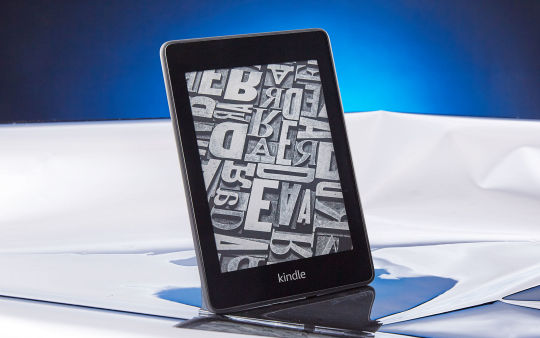
What sounds better: lugging around a backpack full of books or toting a sleek e-reader to class? The answer is clearly the latter, and Amazon’s latest Kindle Paperwhite is still one of the finest ways to access loads of books in one place. It’s slightly slimmer than the model it replaces, the screen’s lighting is more even, it comes with even more storage (8GB, up from 4GB) and it’s fully waterproof. There might not be a more convenient way to blow through all that Chaucer you were just assigned.
Admittedly, though, Kindles are less than ideal in certain ways. For one, not all Kindle books have page numbers that correspond to written copies, and lit majors won’t have much luck downloading Norton Critical Editions. That said, these devices make for a pleasant reading experience; that’s nothing to sneeze at when your list of required books starts piling up. — Chris Velazco, Senior Mobile Editor
Buy Kindle Paperwhite on Amazon – $130
Apple iPad Air (2019)
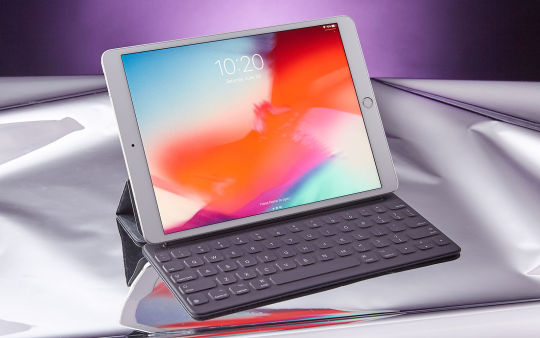
Some people swear by the iPad Pro for note-taking, and thankfully, Apple took just about everything that made the tablet ideal for schoolwork and transplanted it into a more affordable package. This is the first iPad Air that Apple has made in three years, and the wait was worth it: The new Air shares a processor with last year’s iPhone XS and is compatible with Apple’s Pencil and Smart Keyboard accessories. Because of the way the tablet market has been shrinking, you’d also be hard-pressed to find a device with a 10.5-inch screen that looks as good as this one.
More importantly, the Air is going to get better with time. We already know that iPadOS packs significant enhancements to performance and multitasking, but new additions — like the ability to save and manage files directly on the tablet — mean the iPad Air will be better-suited for getting work done. Sure, it might not replace your standard laptop for everything you’ll need at school, but since it handles work and play equally well, it’s a valuable addition all the same. — C.V.
Buy iPad Air (2019) – $499+
Apple Watch Series 4

The Apple Watch has come a long way since its debut in 2015. And with the Series 4, Apple made its wearable even better than the previous model, thanks to a bigger, edge-to-edge screen; longer battery life; more-accurate step-tracking; and an electrocardiogram test that can detect an irregular heartbeat. That’s in addition to being water-resistant and working with thousands of popular apps out of the box, which is what makes the Series 4 a well-rounded package.
The Apple Watch Series 4 starts at $399 for the GPS-only, 40mm model or $429 if you want the bigger 44mm screen. Meanwhile, the LTE version, which lets you make calls from the Watch without a paired iPhone nearby, costs $100 more. If you already have an iPhone, though, your best option may be the GPS edition, since you can still make calls from your wearable as long as your smartphone is within range. — Edgar Alvarez, Senior Editor
Buy Apple Watch Series 4 on Amazon – $349+
Google Pixel 3a

The original Pixel 3 and 3 XL were nice enough in their own right, but the newer, cheaper Pixel 3a proved Google could make excellent phones on the cheap. $400 gets you one of the best smartphone cameras on the market right now, not to mention years of big software and security updates and some of the best battery life we’ve ever seen out of a Google device. Play your cards right — by which we mean don’t drop it in a beer — and the 3a could easily get you through the next few years of academia. — C.V.
Buy Pixel 3a – $399
Fitbit Versa

This Apple Watch lookalike is actually quite pretty in its own right, especially if you get it with a rose gold case and lilac strap. But looks aside, the Fitbit Versa is also a powerful fitness-tracking smartwatch that’s ideal for those who care more about their workouts than being able to reply to messages from their wrist. You can track a variety of activities, including swimming, and refer to the Versa’s built-in workout guides if you need some inspiration at the gym.
If you really need to save $30, consider the Fitbit Versa Lite, which does most of the same stuff but lacks a gyroscope to count laps in the pool, an altimeter to detect flights climbed, not to mention WiFi, music storage and on-screen tutorials. That’s why, if you have the funds, we strongly suggest the Versa instead. — Cherlynn Low, Reviews Editor
Buy Fitbit Versa on Amazon – $179.95
Mophie Powerstation XL

If you’re carrying multiple gadgets to and from class, it’s a near certainty that at least one of them will run low on battery during the process. That’s where Mophie’s updated PowerStation XL comes in. It doesn’t weigh much more than a standard paperback, so it won’t put any undue strain on your back, but its 15,000mAh battery means you can charge whatever you’ve brought with you several times over. You can even charge multiple devices at the same time, assuming that at least one of them uses USB-C cables to draw power. This year’s models come clad in surprisingly nice fabric too, so this most utilitarian of gadgets now feels a touch more stylish to boot. — C.V.
Buy Powerstation XL on Amazon – $69.95
Oculus Quest
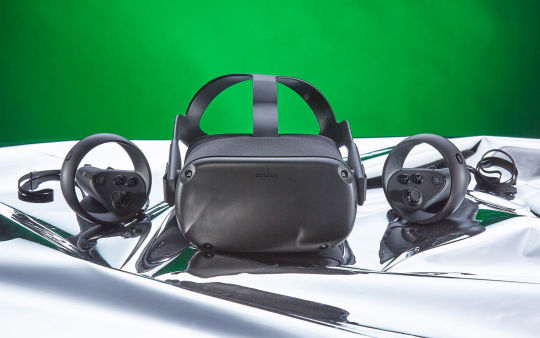
Just because you’re on a tight school budget doesn’t mean you have to forego quality VR. At $399, Oculus’ Quest headset is an affordable way to get into virtual reality while preserving many of the features that make the technology so great. You still have six-degree freedom of movement and full-featured controllers, but you won’t have to buy a powerful PC. There aren’t any wires to trip you up either. And when you can both watch videos as well as play hot VR titles like Beat Saber and Vader Immortal, it offers plenty of ways to tune out your roommates. — Jon Fingas, Contributing Editor
Buy Oculus Quest on Amazon – $399
OnePlus 7 Pro
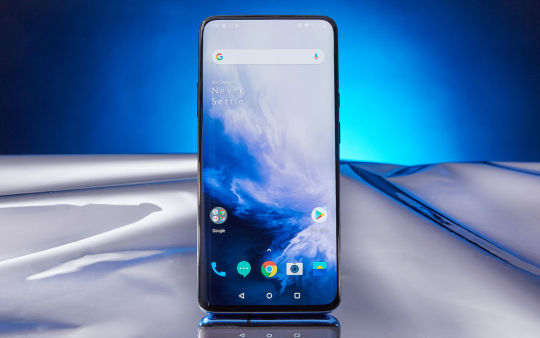
You don’t have to give up dreams of owning a top-tier smartphone when you’re scrimping and saving for tuition. The OnePlus 7 Pro may be more expensive than past OnePlus devices, but it still delivers flagship-worthy smartphone features for hundreds of dollars less than other premium devices. Its giant, responsive screen is a treat for watching videos in between classes, and its speedy performance ensures that you can juggle all the chats for your next big party. While the camera isn’t spectacular, it’s more than fine for the price — and the rest of the phone is done so well that you probably won’t mind. — J.F.
Buy OnePlus 7 – $669+
Samsung Galaxy Watch Active

You’ll be pleasantly surprised by how much better Samsung’s wearables are at tracking your activity than Fitbits and Wear OS watches. The Galaxy Watch Active is Samsung’s most affordable smartwatch, and it’s proactive about reminding you to get up and move when you’ve been idle for an hour. By calculating your heart rate variance, the Watch Active can also gauge your stress levels to tell you to take a breather — a useful feature when midterms roll around.
In addition, the device tracks your sleep, lets you dictate or type out email and text replies, and has a no-frills aesthetic that will blend with most outfits. It can even act as a remote control for your presentation so you can advance to the next slide by swiping your watch face. Plus, it lasts two to three days on a charge, which means you’ll still be able to track your morning run if you stayed out all night. Those with bigger budgets should go for the $330 Galaxy Watch, which features a useful rotating bezel that makes navigating the Tizen OS interface easier and more precise. That watch also has a bigger face and lasts longer. It has a more masculine look, though, so if you want something more neutral you’re better off sticking with the Watch Active. — C.L.
Buy Watch Active on Amazon – $179+
Skagen Falster 2
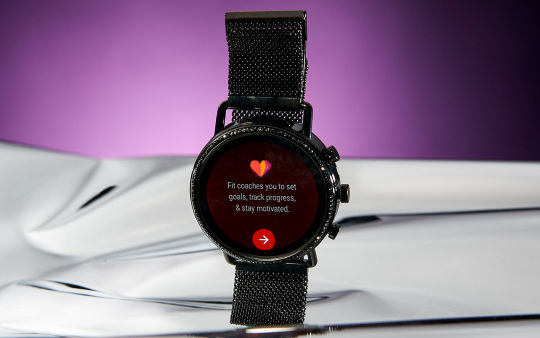
Don’t discount Wear OS watches yet. With a user-friendly activity-tracking interface, compatibility with a ton of apps and the powerful Assistant baked in, Google’s wearable platform is useful for those looking for convenience who don’t need a lot of frills. The best thing about this ecosystem is the vast amount of options available, so you can pick one from your favorite luxury brand or simply go with the prettiest.
In our humble opinion, the Skagen Falster 2 is the most attractive, thanks to its clean, minimalist design. It’s also impressively light and comfortable yet water-resistant enough that you can take it for a lap or two in your pool. One thing to note though: Most Wear OS watches available last about a day, regardless of the chipset they use, so maybe get a bedside charging stand too. — C.L.
Buy Skagen Falster 2 on Amazon – $275
In this article: amazon, apple, applewatchseries4, bts2019, facebook, falster2, fitbit versa lite, fitbitversa, galaxy watch active, gear, google, ipad air 2019, mobile, mophie, oculus, oculus quest, oneplus, OnePlus 7 Pro, pixel 3a, powerstationxl, samsung, skagen, skagenfalster2, thebuyersguide
All products recommended by Engadget are selected by our editorial team, independent of our parent company. Some of our stories include affiliate links. If you buy something through one of these links, we may earn an affiliate commission.

Comments

290 Shares
The post The best smartphones, tablets and smartwatches for students appeared first on thedigichick.
from https://www.thedigichick.com/software/the-best-smartphones-tablets-and-smartwatches-for-students/ from https://thedigichick.tumblr.com/post/187339581354
0 notes
Text
Nintendo Switch review: An ambitious console missing some pieces
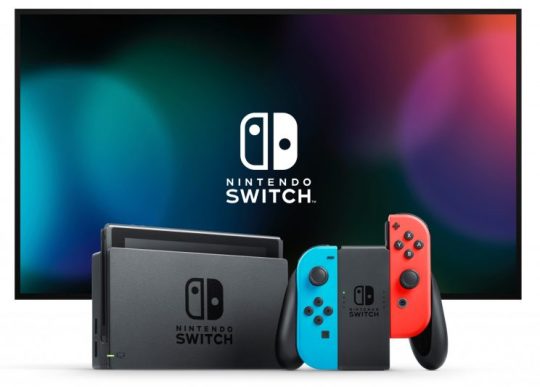
The Nintendo Switch console is impressive hardware, but it lacks games and features
Releasing worldwide March 3, the Nintendo Switch ($300) is more than just a new video game console: It’s a day of reckoning — or a moment of clarity — for arguably the most important company in the history of video games.
The purveyor of legendary franchises and systems struck out with their last home console, the Wii U. An unmitigated disaster, the Wii U simply couldn’t compete with more powerful systems from Sony and Microsoft, and failed to find a home with gamers looking to move past the quirky wand waving of the original Wii. Turns out a tablet you can’t travel with built for a system lacking the biggest games wasn’t a great idea.
The Wii U was more than that, of course. Those of us who took the plunge found bits and pieces of the same magic Nintendo poured into other systems — solid takes on “Mario Kart,” “Super Mario,” “Smash Brothers” and the fresh franchise “Splatoon,” mostly — but the ingenuity, the risk-taking bravado that yielded games like “Wii Sports,” “Metroid” and “Super Mario 64” and systems like the Wii, was M.I.A.
To make up for it, Nintendo has been busy monetizing the hell out of itself. It had last holiday’s biggest toy with the nostalgia-packed NES Classic Edition, shook the mobile world to its core with “Pokemon Go,” and made millions with “Super Mario Run.” But with the Wii U gasping and the handheld 3DS line stagnating, we have all wondered what, exactly, would become of Nintendo the console maker.
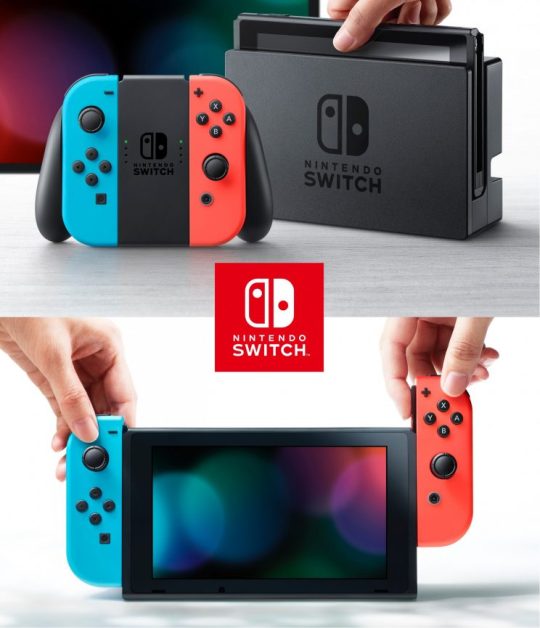
A demonstration of how you change the Switch from TV to tablet mode.
The answer is the Switch. Aiming to unite the company’s disparate audiences by pulling double duty as an all-in-one home console/portable machine, the Switch is an interesting proposition. It’s a solution in search of a problem — most gamers function just fine with a console tethered to their entertainment center and a smart something-or-other to entertain them on the go — but Nintendo excels at giving people great things they didn’t realize they totally needed.
Does that describe the Switch? That depends on how much you love the “Legend of Zelda,” because other than one extremely awesome launch game, this smartly designed console isn’t quite ready for prime time.
High-tech tech
Technologically speaking, the Switch is Nintendo growing up.
The console itself is a 6.2-inch touchscreen tablet that can connect to a living room TV or be taken on the go like a traditional handheld device. It’s a solid hunk of tech, with harder angles and more heft than the Wii U tablet. It’s on par with the kind of consumer tech you’d expect from Samsung or Apple, and a far cry from the kid-first feel of the Gamecube and Wii.

The Switch is a stylish piece of tech.
The tablet rests in a small innocuous dock that connects it via HDMI to your TV and via AC adapter to power. Pull the Switch out of the dock and the onscreen image quickly shifts back to the tablet’s screen, ready for your backpack (or the official Switch carrying case … sold separately, naturally.)
The box also comes with two “Joy-Con” controllers, which can be used in various ways to interact with the Switch. Each Joy-Con has a joystick and a few face buttons. One has a “home” button, while the other has a terrifically useful “screenshot” button to instantly grab a shot of whatever’s happening on screen.
Holding one in each hand works fine, though you can also slip them into the included Joy-Con Grip to give them a more stable, classic gamepad feel. The Joy-Cons work when separated, too. Connect the included wrist strap and each Joy-Con becomes a mini-controller tailored for Wii-like party-based games. Alternately, you can slide the Joy-Cons into the tablet itself, effectively making it a giant Game Boy.
The result is occasionally fiddly but mostly brilliant. Slipping the Joy-Cons into the tablet yields a satisfying ‘snap’, and the system recognizes every other controller configuration remarkably quickly. The Joy-Cons are dripping with tech — accelerometers, infrared motion detection, gyro sensors, advanced “rumble” feedback — and while they’re a bit on the small side, jamming them into the Grip works in a pinch for bigger hands.
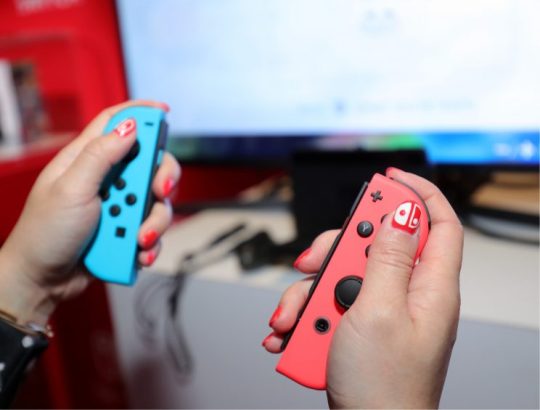
The Nintendo Switch Joy-Con controllers.
Better still, the Switch’s conceptual premise works wonderfully out in the wild. I traveled for a few days with my Switch and it felt like an extremely fancy handheld; I returned home, popped it back into the dock, and it felt like a console. There’s really no difference in the experience; if anything, games look a bit sharper and tend to run a bit smoother in tablet mode.
The device’s multi-functional, grab-and-go approach could have fallen on its face, but Nintendo went all out to make the Switch feel like a mature, confident piece of tech. It’s truly the switch-hitter it set out to be.
Power down
It’s not a home run, however.
For a system Nintendo hopes players will take on the road, the Switch doesn’t hold a very long battery charge. This varies from game to game, but in testing “The Legend of Zelda: Breath of the Wild” (the game every Switch owner will be playing for the next three months), Nintendo’s previously revealed three-hour battery life statement holds true. That’s pretty meager for a handheld device.
The Joy-Cons require their own charge; re-attaching them to the tablet while it’s charging will do the trick, though Nintendo overlooked a pretty common use case by failing to include a way to charge the controllers and continue playing while the tablet is docked. You can connect them to the included Grip, but that’s just a formed piece of plastic and cannot connect to any power source.
The solution? You’ve got a few. The cheapest is to just remove the tablet from the dock, connect the Joy-Cons to the tablet, connect the tablet to a power source and play with the system as a portable until they’re charged. Alternately, you can buy another accessory, the Joy-Con Charging Grip ($30), which is identical to the standard Grip except for a small USB-C port included on the top.
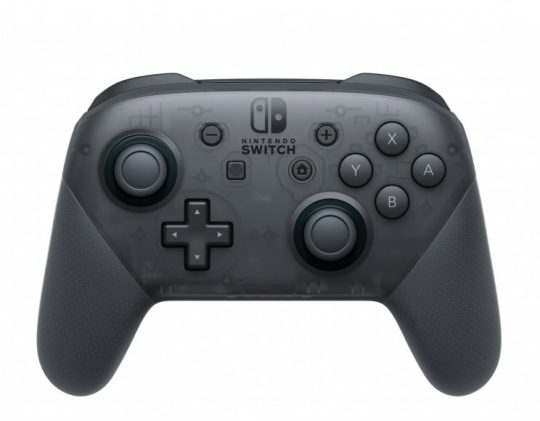
The Nintendo Switch’s Pro controller might be your best bet for games like ‘Zelda.’
Your best bet may be to buy yet another accessory, the pricey Switch Pro Controller ($70). It’s expensive, but is a much better gamepad for action games like “Zelda” (the one game you will be playing, remember) and can be plugged right into the dock for charging while playing.
These are the sorts of problems most consoles don’t worry about, but I guess if you insist on delivering a million ways to interact with a console, it’s bound to get fussy. And while annoying, none of these are deal breakers, especially when compared to the Switch’s sync issue.
Sync or swim
Sadly, at the time of writing there is very clearly a hardware issue affecting the way the Switch recognizes the Joy-Cons.
All is well when you play the system as a handheld. But when playing with detached Joy-Cons, I occasionally experienced a noticeable interruption in the Joy-Con’s responsiveness. This was primarily with the left Joy-Con (the one most games use for movement), and seems tied to physically obstructing the wireless connection. Simply crossing my legs while playing and holding the left Joy-Con below my knee resulted in some connection errors – and a few untimely deaths in “Zelda.”
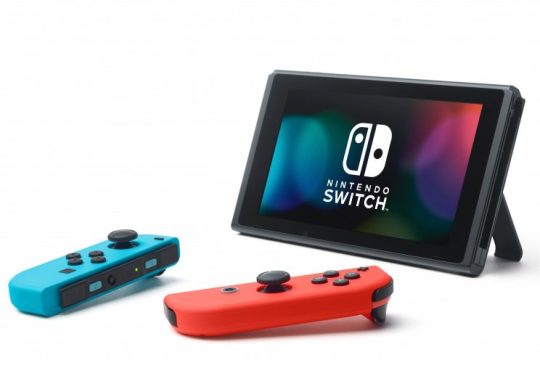
The Switch can be used in Table mode for on-the-go multiplayer games.
Reports from many other outlets confirm this isn’t just about my particular review unit. Perhaps it will be fixed in the system’s pending Day One patch (more on that later), though Nintendo has yet to issue a formal response. Ultimately it’s something you can deal with, but it’s there, and it’s impossible to overlook.
Game drain
The same can be said for the Switch’s woefully anemic launch lineup.
Console launch lineups are typically pretty bad, often a hodgepodge of old and new risk-averse games. But only 10 are available for the Switch on launch day. That is ridiculously paltry. The Wii U had 23 launch titles. The PlayStation VR had 30. The Xbox One totaled 22, there were 25 for the PS4, and 21 for the Wii (not counting the 12 classic games that came with the launch day Virtual Console).
Worse, only one of those games is really worth the price of admission. The thing is, “The Legend of Zelda: Breath of the Wild” is such an outrageously good game, it almost makes up for the other nine. I’m not reviewing “Zelda” here (our review posts on March 2) but suffice to say it is the biggest, boldest “Zelda” ever, a game-changer for the venerable series, and one that joins “Tetris,” “Super Mario Bros.,” “Super Mario 64,”and “Halo” in the launch game all-time top 5.

‘The Legend of Zelda: Breath of the Wild’ is the only exceptional launch game for the Switch. But it’s incredibly exceptional.
The rest of the lineup, however, is an all-time stinker. “1-2 Switch,” Nintendo’s minigame callback to the system-selling “Wii Sports,” is a shockingly low-rent and wildly overpriced ($50) collection of 30 mindless tech demos. It tries way too hard to turn the Switch into a party system, constantly urging you to look at the other player instead of the screen. During the lousy ping-pong minigame, a disembodied narrator instructed me to “imagine a table, and a ball” as I pretended to play ping-pong. Considering the state of gaming in 2017, asking gamers to “imagine graphics” is not, as the kids say, lit. Or as people my age say, cool.
It gets less interesting as you peruse the list. Obligatory Switch versions of previously released games like “Just Dance 2017” and “Skylanders: Imaginators” aren’t very exciting, and while I appreciate the terrific indie “Shovel Knight,” it dates back to 2014. “Super Bomberman R” is just more “Bomberman.” Even the best of the rest, the charming puzzler “Snipperclips,” is pretty lightweight.
So, it’s “Zelda” or bust. For millions, that will be just fine; “Breath of the Wild” is big and deep enough to warrant many months of play and exploration. And of course there are more coming. Nintendo expects 60 indie games to hit the Switch this year alongside a few big first-party games like “Splatoon 2,” the boxing game “Arms,” and surefire holiday hit “Super Mario Odyssey.”
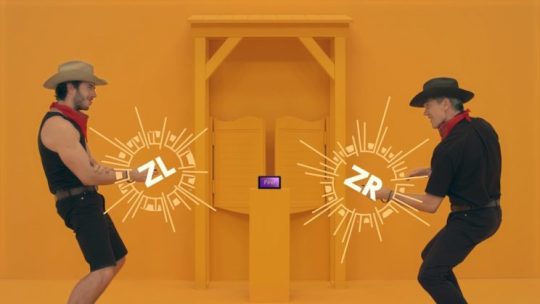
‘1-2 Switch’ is nowhere near as good as ‘Zelda.’
But considering the slow rollout of software for the Wii U and Nintendo’s long-standing problem of getting third-parties on board with its consoles, a crummy launch lineup isn’t helping redefine the company as a major hardware player.
Space saver
The good news is that the OS powering the Switch is pleasantly streamlined and minimalist. Retail games, which come on tiny cartridges dwarfed by even a 3DS cart, load astonishingly quickly. Navigating menus is a breeze, and there’s no crazy, confusing Wii Plaza or anything to jumble up the screen.
Problematically, the system only ships with 32 GB of memory. Though retail games won’t take up any space at all (on other consoles they eat up install space), downloadable games will gobble that up quickly. A digital version of “Zelda” alone will take up about 13 GB.
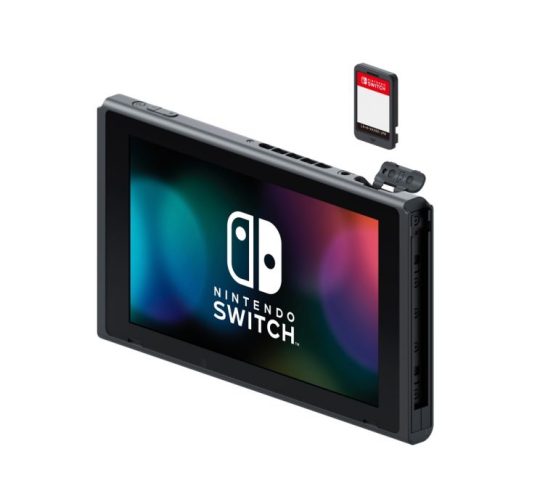
The Nintendo Switch’s game cartridges are almost shockingly small.
The memory can be expanded with micro SDXC or SDHC cards, and while the price of those is a bit steep currently (a 256 GB card will set you back $150 or so), there is at least an upgrade path here. If you’re planning to download a lot of games — and considering that digital downloads are only growing in popularity compared to traditional retail boxes, you probably are — expect to pay extra.
Feature story
But for all we know about the Switch, there remains a deep well of questions.
The Nintendo Switch we received for review was missing many features, including access to the digital eShop, the ability to make and manage Friends and any functional online play. These features (and possibly more) are reportedly coming in a Day One patch. We’ll update this review as soon as we can check it out.
But even assuming basics like Friends codes and a digital storefront work, the Switch is lacking key features at launch. The Virtual Console, Nintendo’s gateway to loads of classic games from their vast library, will not launch alongside the system. If you still have funds in the digital wallets of your 3DS or Wii U, you’ll be able to access that money to use with the Switch, provided you link up your accounts. But Nintendo still won’t say if you’ll gain access to your old Virtual Console purchases. Considering that the VC stretches back to the Wii, being asked to re-purchase old games you have possibly purchased a few times already isn’t particularly consumer-friendly.
Also notable is the lack of any non-gaming apps at launch. No Netflix, no Spotify, nothing beyond games. For some this will be a breath of fresh air — we don’t need every streaming service on every device, do we? — but considering the console’s portability, its potential to replace, say, an iPad on a work trip is mitigated.
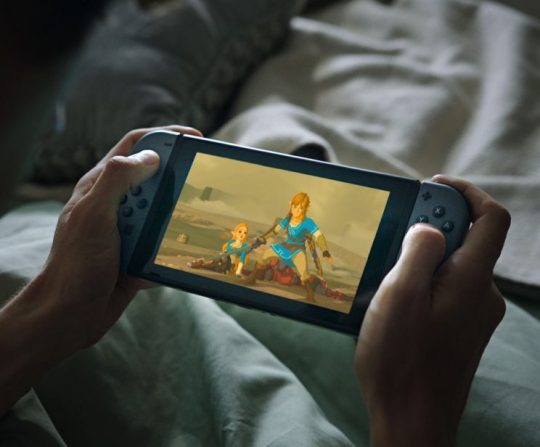
Playing console games on the go is an enticing reason to buy the Switch.
More concerning is the lack of a comprehensive online gaming network. Nintendo is planning to roll out an Xbox Live/PSN-like service this fall, but has yet to deliver any details regarding price, social features or caveats. Nintendo has never been great with online play, but to zone out on such a core console ingredient seems at best foolish and at worst tragic.
Switch owners might not be built of the same stuff as competitive “Call of Duty” players, but the basic ability to play games or interact with friends online has been part of the console experience for many years now. Nintendo had an opportunity to grab this particular bull by the horns and redefine our expectations; instead, we’re all left wondering what the future holds.
The verdict
So what does it hold? Where will the Switch be in three years? And more crucially, should you buy in on Day One (or whenever units become available again)?
I want to say yes. I desperately want people to experience “Zelda,” a shoo-in for Game of Year contention. It’s that good, and it serves as a reminder that when it comes to building killer video games, Nintendo is still among the best in the business.
But when it comes to building a polished console ecosystem, they’re lost in Gerudo Valley. As great as “Zelda” is, it’s not worth $360 (plus it’s releasing on the Wii U, which you might already own). With few other games worth your attention, tons of missing features and a potentially problematic hardware glitch, the Switch doesn’t make a great first impression.
I have faith that Nintendo will solve some of this stuff, and that we’ll see a number of great games down the line. The Switch’s hybrid functionality is genuinely cool, and the core tech is some of the best Nintendo has ever built. But until we really see the software flow and the network flourish, it remains a system making big promises that it might not keep. We’ve seen Nintendo play this game before. Here’s hoping they quickly learn how to win it again.
More games news:
‘For Honor’ review: You’ll need skill to survive this online fighter
‘Horizon: Zero Dawn’ Review: Combat and storytelling shine in spectacular sci-fi epic
The $450 Analogue Nt mini brings new life to old-school NES games
‘Resident Evil 7’ review: It’s a screaming good time
#_uuid:5ca3e9af-d860-364d-a48a-546d316c8076#Nintendo#_revsp:yahoofinance.com#$MSFT#games reviews#_author:Ben Silverman#video game reviews#Nintendo Switch#_lmsid:a077000000BAh3wAAD#Switch#reviews#game reviews#$ntdoy#$SNE#Nintendo Switch review#video games
1 note
·
View note
Text
[ad_1]
Ricoh has a well-earned good reputation when it comes to building smart, technically excellent photographic equipment — including the almost legendary Ricoh GR series of pocketable APS-C cameras, which are a favorite among street photographers everywhere. Earlier this year, the company released the Ricoh Theta Z1, which builds on its success with its pioneering Theta line of 360-degree cameras and delivers a step-up in terms of image quality and build that will feel at home in the hands of enthusiasts and pro photographers.
The Theta Z1 is what happens when you push the limits of what’s possible in a portable form factor 360 camera, both in terms of build materials and what’s going on on the inside. Like its more affordable, older sibling, the Theta V, it shoots both stills and video in 360 degrees — but unlike the V, it does so using two 1-inch sensors — unprecedented for a 360 camera in this category. Sony’s celebrated RX100 series was pushing boundaries with its own 1-inch sensor in a traditional compact camera, and the Ricoh is similarly expanding the boundaries of 360 photography by including not just one, but two such sensors in its Z1. That translates to unmatched image quality for 360 photographers — provided you’re willing to pay a premium price to get it.
Design and build
The Ricoh Theta Z1 feels a lot like previous iterations of the Theta line — it’s essentially a handle with two big lenses on top, which is a pretty optimal design overall for a device you’re mostly going to be holding up to take 360 photos and video. It’s a bit bulkier than previous generations, and heavier, too, but it’s still a very portable device despite the increased size.
With the bulkier build, you also get a magnesium outer case, which is textured and feels fantastic when held. If you’ve ever held a pro DSLR or mirrorless camera, then the feel will be familiar, and that says a lot about Ricoh’s target audience with this $1,000 device. The magnesium alloy shell isn’t only for making it feel like it’s worth what it costs, however; you also get big durability benefits, which is important on a device that you’re probably going to want to use in remote locales and off the beaten path.
The build quality also feels incredibly solid, and the button layout is simple and easy to understand. There’s a single shutter button on the front of the camera, just above an OLED display that provides basic info about remaining space for images or video, battery life and connection status. A single LED indicates both mode and capture status information, and four buttons on the side control power on/off, Wi-Fi and Bluetooth connections, photo and video mode switching and enabling basic functions like a shutter countdown timer.
Using the hardware buttons to control the Theta Z1 independent of your smartphone, where you can remotely control all aspects of the camera when connected via Wi-Fi and using the app, is intuitive and easy, and probably the way you’ll use the Z1 more often than not when you’re actually out and about. There’s little to worry about when it comes to framing, for instance, because it captures a full 360 image, and you can handle all of that after the fact with Ricoh’s editing tools prior to sharing.
On the bottom, there’s a USB-C port for charging and wired data transfer, and a 1/4″ standard tripod mount for attaching the Z1 to tripods or other accessories. This is useful, because if you use a small handle you’ll get a better overall image, as the Z1’s software automatically edits out the camera, and, to some extent, the thing that’s supporting it. There’s also a small lug for attaching a wrist strap, but what you won’t find is a flap or door for a micro SD card — the Theta Z1 relies entirely on built-in storage, and offers just under 20GB of usable storage.
Still images
Ricoh’s Theta Z1 has two 1-inch sensors on board, as mentioned, and those combine to provide an image resolution of 670×3360. The camera captures two 180-degree fields of view from each lens, and automatically stitches them together in software to produce the final image. The result is the sharpest, most color-accurate still photos I’ve ever seen from a 360-degree camera, short of the kind of content shot by professionals on equipment costing at least 10x more.
The resulting images do incredibly well when viewed through VR headsets, for instance, or when you use Theta’s own 360 viewer for web in full-screen mode on high-resolution displays. They also make it possible to export flat images that still look sharp, which you can crop and edit in the Theta+ app. You can create some truly amazing images with interesting perspective that would be hard to get using a traditional camera.
Indoors in low-light situations, the Ricoh Theta Z1 still performs pretty well, especially compared to its competitors, thanks to those big 1-inch sensors. Especially in well-lit indoor environments, like in the restaurant example below, details are sharp and crisp across the frame and colors come out great.
In settings where a lot of the frame is dark or unevenly lit, as in the example at the Robot Restaurant in Tokyo below, the results aren’t nearly as good when operating in full automatic mode. You can see that there is some blur in the parts of the scene with motion, and there’s more grain apparent in parts of the frame, too. Overall though, the audience is pretty well captured and the colors still look accurate and good despite the many different tones from different sources.
The Ricoh Theta Z1 still does its best work in bright outdoor settings, however — which is true for any camera, but especially for cameras with sensors smaller than full-frame or APS-C. It’s still definitely capable enough to capture images you can work with, and that provide a great way to revisit great events or memories in a more immersive way than standard 2D images can accomplish.
You can adjust settings, including aperture to optimize your photo capture, as well as choosing between f/2.1, f/3.5 and f/5.6, with higher apertures offering higher-resolution images. The built-in lens has been designed to reduce ghosting, purple fringe artifacts and flare, and it does an outstanding job at this. RAW capture allows you to edit DNG files using Lightroom, and it works amazingly well with Lightroom mobile for advanced tweaks right on the same device.
Video
The Ricoh Theta Z1 does video, too — though the specs for the video it produces are essentially unchanged from the Theta V on paper. It can capture 4K video at 30 fps/56 mbps or 2K video at 30fps/16mbps, and live stream in both 4K and 2K. There’s a four-channel built-in microphone for immersive audio recording, and it can record as much as 40 minutes of 4K or 130 minutes of 2K footage, though each individual recording session is capped at 5 minutes and 25 minutes for 4K and 2K, respectively.
Ricoh has tougher competition when it comes to video in the 360 camera game — Insta 360’s One X has been a clear winner in this category, and has led to this camera even finding some fans when compared to action cameras like the GoPro Hero 7 and the DJI Osmo Action, thanks in large part to its fantastic built-in image stabilization.
The Ricoh Theta Z1 just frankly doesn’t impress in this regard. The sensors do allow for potentially better image quality overall, but the image stabilization is definitely lacking, as you can see, and overall quality just isn’t there when measured against the Insta360 One X. For a fixed installation for real-time live-streaming, the Ricoh probably makes more sense, but video isn’t the device’s strength, and it’s a little disappointing given its still shooting prowess.
Features and sharing
The range of editing options available either via Theta+ or using the DNG files in both mobile and desktop photo editing software for the Theta Z1 is outstanding. You can really create and compose images in a wide variety of ways, including applying stickers and text that stick to the frame as a viewer navigates around the image. Sharing from the Theta app directly works with a number of platforms, including YouTube, Twitter, Facebook and theta360.com, where you can get embeddable 360 images like those found in this post above.
Ricoh has done a great job making sure you can not only capture the best possible 360 images with this camera, but also share them with others. It’s also leading the pack when it comes to the range of options you have for getting creative with slicing up those 7K spherical images in a variety of ways for traditional flat image output, which is not surprising, given the company’s heritage.
Bottom line
Simply put, the Ricoh Theta Z1 is the best 360 camera for still photos that you can buy for less than $1,000 – even if just squeaks under that line. It’s the best still photo 360 camera you can pick up for considerably more than that, too, given its sensor arrangement and other technical aspects of the device, including its selectable aperture settings and RAW output.
The $999.95 asking price is definitely on the high end for this category — the Theta V retails for less than half that, as does the Insta360 One X. But I mentioned the Sony RX100 above, and the pricing is similar: You can get a compact camera for much less money, including very good ones, but the latest RX100 always commands a premium price, which people are willing to pay for the very best-in-class device.
If what you want is the best still photography 360 camera on the market, the Ricoh Theta Z1 is easily it, and if that’s the specific thing you’re looking for, then Ricoh has packed a lot of cutting-edge tech into a small package with the Z1.
[ad_2] Source link
Ricoh’s Theta Z1 is the first truly premium consumer 360 camera – TechCrunch Ricoh has a well-earned good reputation when it comes to building smart, technically excellent photographic equipment — including the almost legendary Ricoh GR series of pocketable APS-C cameras, which are a favorite among street photographers everywhere.
0 notes
Text
Ricoh has a well-earned good reputation when it comes to building smart, technically excellent photographic equipment – including the almost legendary Ricoh GR series of pocketable APS-C cameras, which are a favorite among street photographers everywhere. Earlier this year, the company released the Ricoh Theta Z1, which builds on its success with its pioneering Theta line of 360-degree cameras and delivers a step-up in terms of image quality and build that will feel at home in the hands of enthusiast and pro photographers.
The Theta Z1 is what happens when you push the limits of what’s possible in a portable form factor 360 camera, both in terms of build materials and what’s going on on the inside. Like its more affordable, older sibling the Theta V, it shoots both stills and video in 360 degrees – but unlike the V, it does so using two 1-inch sensors – unprecedented for a 360 camera in this category. Sony’s celebrated RX100 series was pushing boundaries with its own 1-inch sensor in a traditional compact camera, and the Ricoh is similarly expanding the boundaries of 360 photography by including not just one, but two such sensors in its Z1. That translates to unmatched image quality for 360 photographers – provided you’re willing to pay a premium price to get it.
Design and build
The Ricoh Theta Z1 feels a lot like previous iterations of the Theta line – it’s essentially a handle with two big lenses on top, which is a pretty optimal design overall for a device you’re mostly going to be using to hold up and take 360 photos and video. It’s a bit bulkier than previous generations, and heavier, too, but it’s still a very portable device despite the increased size.
With the bulkier build, you also get a magnesium outer case, which is textured and which feels fantastic when held. If you’ve ever held a pro DSLR or mirrorless camera, then the feel will be familiar, and that says a lot about Ricoh’s target audience with this $1,000 device. The magnesium alloy shell isn’t only for making it feel like it’s worth what it costs, however; you also get big durability benefits, which is important on a device that you’re probably going to want to use in remote locales and off the beaten path.
The build quality also feels incredibly solid, and the button layout is simple and easy to understand. There’s a single shutter button on the front of the camera, just above an OLED display that provided basic info about remaining space for images or video, battery life and connection status. A single LED indicates both mode and capture status information, and four buttons on the side control power on/off, Wifi and Bluetooth connections, photo and video mode switching and enabling basic functions like a shutter countdown timer.
Using the hardware buttons to control the Theta Z1 independent of your smartphone, where you can remotely control all aspects of the camera when connected via WiFi and using the app, is intuitive and easy, and probably the way you’ll use the Z1 more often than not when you’re actually out and about. There’s little to worry about when it comes to framing, for instance, because it captures a full 360 image, and since you can handle all of that after the fact with Ricoh’s editing tools prior to sharing.
On the bottom, there’s a USB-C port for charging and wired data transfer, and a 1/4″ standard tripod mount for attaching the Z1 to tripods or other accessories. This is useful, because if you use a small handle you’ll get a better overall image, since the Z1’s software automatically edits out the camera, and, to some extent, the thing that’s supporting it. There’s also a small lug for attaching a wrist strap, but what you won’t find is a flap or door for a micro SD card – the Theta Z1 relies entirely on built-in storage, and offers just under 20GB of usable storage.
Still images
Ricoh’s Theta Z1 has two 1-inch sensors on board, as mentioned, and those combine to provide an image resolution of 670×3360. The camera caputres two 180-degree fields of view from each lens, and automatically stitches them together in software to produce the final image. The result is the sharpest, most color-accurate still photos I’ve ever seen from a 360-degree camera, short of the kind of content shot by professionals on equipment costing at least 10x more.
The resulting images do incredibly well when viewed through VR headsets, for instance, or when you use Theta’s own 360 viewer for web in full-screen mode on high-resolution displays. They also make it possible to export flat images that still look sharp, which you can crop and edit in the Theta+ app. You can create some truly amazing images with interesting perspective that would be hard to get using a traditional camera.
Indoors in low light situations, the Ricoh Theta Z1 still performs pretty well, especially compared to its competitors, thanks to those big 1-inch sensors. Especially in well-lit indoor environments, like in the restaurant example below, details are sharp and crisp across the frame and colors come out great.
In settings where a lot of the frame is dark or unevenly lit, as in the example at the Robot Restaurant in Tokyo below, the results aren’t nearly as good when operating in full automatic mode. You can see that there is some blur in the parts of the scene with motion, and there’s more grain apparent in parts of the frame, too. Overall though, the audience is pretty well captured and the colors still look accurate and good despite the many different tones from different sources.
The Ricoh Theta Z1 still does its best work in bright outdoor settings, however – which is true for any camera, but especially for cameras with sensors smaller than full-frame or APS-C. It’s still definitely capable enough to capture images you can work with, and that provide a great way to revisit great events or memories in a more immersive way than standard 2D images can accomplish.
You can adjust settings including aperture to optimize your photo capture, including choosing between f/2.1, f/3.5 and f/5.6, with higher apertures offering higher resolution images. The built-in lens has been designed to reduce ghosting, purple fringe artifacts and flare, and it does an outstanding job at this. RAW capture allows you to edit DNG files using Lightroom, and it works amazingly well with Lightroom mobile for advanced tweaks right on the same device.
Video
The Ricoh Theta Z1 does video, too – though the specs for the video it produces are essentially unchanged from the Theta V on paper. It can capture 4K video at 30 fps/56 mbps or 2K video at 30fps/16mbps, and live stream in both 4K and 2K. There’s a four-channel built in microphone for immersive audio recording, and it can record as much as 40 minutes of 4K or 130 minutes of 2K footage, though each individual recording session is capped at 5 minutes and 25 minutes for 4K and 2K respectively.
Ricoh has tougher competition when it comes to video in the 360 camera game – Insta 360’s One X has been a clear winner in this category, and has led to this camera even finding some fans when compared to action cameras like the GoPro Hero 7 and the DJI Osmo Action, thanks in large part to its fantastic built-in image stabilization.
The Ricoh Theta Z1 just frankly doesn’t impress in this regard. The sensors do allow for potentially better image quality overall, but the image stabilization is definitely lacking, as you can see below, and overall quality just isn’t there when measured against the Insta360 One X. For a fixed installation for real-time live-streaming, the Ricoh probably makes more sense, but video isn’t the device’s strength, and it’s a little disappointing given its still shooting prowess.
Features and sharing
The range of editing options available either via Theta+ or using the DNG files in both mobile and desktop phot editing software for the Theta Z1 is outstanding. You can really create and compose images in a wide variety of ways, including applying stickers and text that stick to the frame as a viewer navigates around the image. Sharing from the Theta app directly works with a number of platforms, including YouTube, Twitter, Facebook and theta360.com, where you can get embeddable 360 images like those found in this post above.
Ricoh has done a great job making sure you can not only capture the best possible 360 images with this camera, but also share them with others. It’s also leading the pack when it comes to the range of options you have for getting creative with slicing up those 7K spherical images in a variety of ways for traditional flat image output, which is not surprising given the company’s heritage.
Bottom line
Simply put, the Ricoh Theta Z1 is the best 360 camera for still photos that you can buy for under $1000 – even if just squeaks under that line. It’s the best still photo 360 camera you can pick up for considerably more than that, too, given its sensor arrangement and other technical aspects of the device including its selectable aperture settings and RAW output.
The $999.95 asking price is definitely on the high end for this category – the Theta V retails for less than half that, as does the Insta360 One X. But I mentioned the Sony RX100 above, and the pricing is similar: You can get a compact camera for much less money, including very good ones, but the latest RX100 always commands a premium price, which people are willing to pay for the very best in-class device.
If want you want is the best still photography 360 camera on the market, than the Ricoh Theta Z1 is easily it, and if that’s the specific thing you’re looking for, than Ricoh has packed a lot of cutting edge tech into a small package with the Z1.
Source link
Ricoh’s Theta Z1 is the first truly premium consumer 360 camera Ricoh has a well-earned good reputation when it comes to building smart, technically excellent photographic equipment – including the almost legendary Ricoh GR series of pocketable APS-C cameras, which are a favorite among street photographers everywhere.
0 notes
Text
Samsung Gear VR W/Controller - Latest Edition (Certified Refurbished)
New Post has been published on https://topbargainwearables.com/samsung-gear-vr-w-controller-latest-edition-certified-refurbished/
Samsung Gear VR W/Controller - Latest Edition (Certified Refurbished)
From Samsung brand name products, The Gear Virtual Reality Headset with Controller (2017) Latest Edition. Model: SM-R325NZVAXAR. Compatible with Samsung Galaxy USB Type-C models: Note8, Galaxy S8, Galaxy S8+, Galaxy S9, Galaxy S9+ and Micro USB models: Galaxy S7, Galaxy S7 edge, Galaxy Note5, Galaxy S6, Galaxy S6 edge and Galaxy S6 edge+. (This latest model is now compatible with the Galaxy Note8)rnrnFeatures:rn- The Samsung Gear VR powered by Oculus allows you to enjoy 2D, 3D, and 360-degree content by connecting it with your mobile device.rn- Be transported to amazing new worlds, in games, video and images.rn- Use the intuitive controller that comes in the box to drop, point, select and Drag with a Wave of your wrist.rn- Enjoy hundreds of games and experiences straight from Oculus. rn- Built-in Accelerometer, Gyro, and Proximity Sensors.rnrnIncludes: Gear VR (SM-R325), Controller with Wrist Strap, Top Strap, Main Strap, Micro-USB to USB-C Adapter, USB-C Device Holder, Micro-USB Device Holder, Controller Holder, Two AAA Batteries, and a User Manual. All original accessories included.
0 notes
Text
VR Goes Mainstream: Oculus Quest is The Headset You’ve Been Waiting For
Our verdict of the Oculus Quest: The first true VR console, the Oculus Quest is an all-in-one system that requires no PC or external tracking sensors. The only let down is the tinny audio, but that's a compromise I can live with. 910
The Oculus Quest is a groundbreaking achievement: it’s an affordable VR headset that anyone can use. It doesn’t need a gaming PC; or any PC at all, in fact. It’s a self-contained unit, with full motion controllers, and an inside-out tracking system that doesn’t need external sensors. It just works. It’s the most console-like VR system yet.
Join me as I take a closer look at exactly what had to be compromised to make this possible in a $399 package. At the end of this review, enter to win your own Oculus Quest in our giveaway!
youtube
Friends Don’t Let Friends Use Mobile VR
Not long ago, if you’d have told me mobile VR had any future at all, I’d have laughed. Google Cardboard and the Daydream successor were a thorn in the side of any real VR efforts. They poisoned the well, and now even Google doesn’t like to talk about them. If you met someone who said they’d tried VR and it was terrible, perhaps even made them sick, you can guarantee they meant they played with some horrid mobile VR headset. There’s a good reason Apple mostly left that market alone. Mobile VR has singlehandedly damaged the reputation of VR as a whole for generations to come.
But the Oculus Go gave us a glimpse of what mobile VR could be when done right. It was still ultimately limited to standing on sitting in one place, and using a pointer or gamepad to navigate, but it was a great refinement.
The Oculus Quest is groundbreaking. It offers a full “room scale” VR experience, with fully tracked controllers for both hands, in a single untethered all-in-one mobile package. It’s actual, real VR, in a mobile package. It plays real VR games. This is the headset that will bring VR to the world.
Oculus Quest Specifications
Oculus Quest Oculus Quest Buy Now On Amazon $399.00
Resolution: 1440 x 1600 per eye (compared to 1280 x 1440 on the Oculus Go, or 1080 x 1200 on the original Rift)
Display: OLED 72Hz
Weight: 571g
Snapdragon 835 with 4GB RAM
Connectivity: USB-C, Bluetooth 4.0, Wi-Fi ac/b/g/n
Internal speakers
Physical IPD adjustment
$399 for 64GB model, $499 for 128GB
In the box, you’ll also find:
5V 3A fast USB-C charger
3m/10ft USB-C cable
Left and right controllers
Glasses spacer
The glasses spacer can be used to increase the distance from your face to the lenses, in case your glasses are pushing up against them. My frames are quite small so I haven’t found this to be necessary, but you may. In terms of comfort, I found no issues with 1-2 hour play sessions. The semi-rigid strap should cup the back of your skull, relieving some of the weight from your face. If you’ve sweat a bit too much, the facial padding can be removed and washed.
The internal battery is good for about two to two and a half hours of use. The inclusion of a really long USB cable is generous and allows you to continue playing even when low on power. Many users are also buying shorter USB-C cables and attaching an additional battery pack directly to the back of the headset.
Two controllers are included in the set. These are very similar to the original Rift Touch controllers, with the same button layout and capacitive sensing features. Each controller features a thumbstick, grip and trigger buttons, A/B buttons on top, and a system or menu button. The only real difference is that the ring of tracking LEDs faces up top rather than down, for better visibility from the cameras in the headset. As with the originals, these are also designed for your left or right hand. Helpfully, they’re labeled L or R in the augmented reality view as you put on the headset.
Interestingly, these are also the exact same controllers used on the current desktop Rift S headset. Not just similar; they are interchangeable. If you own both headsets and happen to lose or break a controller, you will be able to use these instead, and vice versa.
Audio on the Quest is delivered in a similar way to the Oculus Go, using internal speakers within the headset. This results in appallingly tinny audio that everyone around you can hear, and it’s the only major criticism I have. You can optionally purchase a pair of stereo earbuds, or connect your own headphones, but this is additional wires on an otherwise very elegant design.
The Games
While the library is quite slim at launch, there are some amazing titles available: Beat Saber, Rec Room, and Robo Recall being the most notable. These are not new games–they’ve been available on PC for a while–nor are they in any way fundamentally different to their PC versions.
If you already own some games on the Oculus store, you may find they’re available to download on the Quest, too. But it’s unlikely. Some you may have to purchase again. To be clear: this is the developer’s decision, not Oculus. The facility for cross-buy is there, but it’s up to the developers to both add support for the Quest, and to set whether it’s free for existing owners.
Beat Saber is not free, even if you already own it for the Rift. It is the perfect game for demoing the Quest though, and apart from less flashing lights, it’s identical to the version on other platforms (not to understate the amount of optimization I expect it took the developer to get it up to that standard). The only downside is that you’ll really notice the lack of bass with the built-in audio.
Rec Room has been my main point of comparison, with around 300 hours mostly played on the HTC Vive. It’s often compared to Wii Sports, but it’s so much more than that. Consisting of many different games, each of which would stand alone as a full game in their own right, some are not yet available on the Quest. Paintball is, as is the Golden Trophy adventure. My verdict is: this is the exact same game, just with much less shininess. There’s less effects, less particles, less reflections, less lighting–but gameplay is the same.
In fact, you can even play alongside your PC VR, PSVR, and non-VR players on other platforms, as it’s completely cross-platform play. I played about 95% as well as I would on PC. In fact, the higher resolution means paintball sniping is actually easier. Rec Room is completely free, but you can support the developers through in-game tokens for cosmetic items.
Robo Recall is also not cross-buy enabled, and while I wasn’t much of a fan on the tethered Rift headset, the freedom of wireless really lets the game shine on the Quest, even with a small graphical downgrade.
The Quest doesn’t support SteamVR natively. That may sound obvious, since it isn’t connected to a PC, but they were originally rumors that a tethering feature might exist, enabling the Quest as a hybrid mobile/PC headset. I say “natively” not supported because an open source project called ALVR has enabled wireless streaming of SteamVR games to the Quest. Virtual Desktop has done the same, but the feature was removed from the Oculus Store version, so for either method, you’ll need to enable developer mode and sideload the APK through the SideQuest unofficial store. This can also be used to sideload custom Beat Saber songs!
Tracking
The biggest concern I had for the Quest was the inside-out tracking system. This uses no external sensors or markers, nor any laser emitters. Instead, four cameras on the headset itself look at your surroundings and see where both you and your controllers are located. Combined with IMU sensor data, this allows for accurate positioning in the 3D space.
This is essentially the same as the current crop of Windows Mixed Reality tethered PC headsets, and my experience with those has been… horrendous. It’s easy to lose tracking on the WMR controllers when they’re near your head, resting to the side, or behind you.
The difference is that the Quest combines four cameras worth of data (located on both the top and bottom of the headset), while WMR uses only two. This gives a much wider field of view around the sides of the headset, allows you to get closer to your face, move controllers further out to the side, and generally just works seamlessly.
In fact, the Oculus Quest has restored my faith that inside-out tracking is perhaps the most viable solution moving forward. There will always be room in the market for the epic warehouse scale and the flawless tracking capabilities of the Valve’s laser-based Lighthouse system, but for most people, the inside-out Oculus tracking is going to be more than sufficient.
Quest can work outside, but only after the sun has gone down.
There are some specific downsides to this approach. It won’t work in low-light because the headset is unable to locate itself. It won’t work in bright sunlight either, because the infra-red of the sunlight overpowers the infra-red tracking LEDs on the controllers (even though your headset itself will be tracking fine, you won’t have hands!). You shouldn’t be using your headset in bright sunlight anyway as even a few seconds shining into the lenses will burn the screen, but you may want to use it in the dark for a virtual cinema.
Oculus has promised a future update will address this, allowing the Quest to degrade to 3DOF (rotational only) tracking in dark environments specifically for use cases like watching a movie or using virtual desktop. This is a clever compromise, but there’s no specific date penned for this update.
Lights out mode. You will have the option to use 3dof tracking in dark rooms, mostly for media applications.
— John Carmack (@ID_AA_Carmack) May 28, 2019
Some users are reporting success with IR lamps in dark rooms, too.
Passthrough Cameras
Using cameras on the headset to catch a glimpse of your real-world surroundings is nothing new–the original HTC Vive had it, Windows Mixed Reality has it–but the Oculus Quest has integrated it so seamlessly that it’s actually useful. When you step outside of your defined boundary, the real world comes into view. It’s somewhat grainy, monochrome, and the scale is every so slightly too small for my eyes, but it absolutely works. You can walk around, make a drink, answer the door, and do whatever it is you need to do before jumping back into your play space. It remembers where your playspace is even if you wander off somewhere completely different.
Passthrough cameras enable you to walk around and manipulate objects in the real world without taking off your headset. You’ll still need a straw to drink from it though…
I can’t emphasize enough how cool, and useful, this actually is. It’s a small feature that I never knew how badly I wanted it until I tried.
Beyond a stereoscopic passthrough view of the world, there’s no further deep integration into games or the system. It’s in this mode that you draw your boundaries, but there’s no augmented reality gaming, and no way to map your real-world objects into a virtual environment. Oculus has teased these sort of features, but I’d expect those on PC if they ever materialize, rather than mobile.
Should You Buy The Oculus Quest?
The Oculus Quest has that all-important quality of pick up and play. There are no longer any barriers to playing VR, and that’s an incredible achievement.
Should you buy a Quest if you already have another PC-based VR headset or PSVR? Probably not. You’ll miss out on superior graphics or exclusive games. Unless you really want one for travel or demos, there’s no need to buy this headset as well. It’s not for you.
Though I admit, even with a superior Vive setup, I find my VR time split equally between that and the Quest. I don’t always want to lock myself away in the basement. Sometimes it’s nice to be alongside other members of the family in the living room or kitchen.
This is the headset that will bring VR to the world.
Oculus Quest Oculus Quest Buy Now On Amazon $399.00
The Good
All-in-one device with no setup needed.
Inside-out tracking works well.
Stereo passthrough view of the world when you step outside boundaries.
Freedom to play anywhere.
Seamless, console-like experience.
The Bad
Audio lacks bass, and everyone around you can hear.
Light leak is problematic when it doesn’t currently work in the dark. A Lights Out mode is promised at some point specifically for watching movies.
Restricted library, and even those that are ported may not be cross-buy. You may find yourself paying for the same games on the Oculus store again.
Enter the Competition!
Oculus Quest Giveaway
Read the full article: VR Goes Mainstream: Oculus Quest is The Headset You’ve Been Waiting For
VR Goes Mainstream: Oculus Quest is The Headset You’ve Been Waiting For published first on http://droneseco.tumblr.com/
0 notes
Link
Price: $499.99
Main specs
Monitor Size: 3.0 inch screen
Optical Zoom: 3.05 x zoom
Display: 3.0" / TFT-LCD / 921,000 dots
Resolution: 24.2 effective megapixels
INCLUDED "IN THE BOX"
Accessories
DK-25 Rubber Eyecup, MH-24 Quick Charger, EN-EL14a Rechargeable Li-ion Battery, ■ Supplied accessories may vary by region or by country!, Nikon AF-P DX Nikkor 18-55mm F/3.5-5.6G VR Lens, AN-DC3 Strap, BF-1B Body Cap
Software
Not Available
PHYSICAL CHARACTERISTICS
Dimensions
124mm x 98mm x 75.5mm
Weight
395.0 grams
Available Color(s)
Red, Black
FLASH & LIGHTING
Flash Type
Built-in flash
Flash Mode
Fill-Flash, Rear Curtain with Slow Sync, Red-Eye Reduction with Slow Sync, Off, Auto with Red-Eye Reduction, Slow Sync, Auto Slow Sync with Red-Eye Reduction, Auto Slow Sync, Auto, Red-Eye Reduction, Rear-Curtain Sync
Flash Effective Range
Not Specified
Maximum Flash Synchronization Speed
1/200 sec.
LENS AND FOCUS
Lens Type
NIKKOR AF-P DX G VR
Lens Construction
12 elements; 9 groups; others: 2 aspherical elements
Optical Zoom
3.05 x zoom
Digital Zoom
Not Available
Lens Mount
Nikon F- Bayonet
Filters
55mm threads
Maximum Aperture
F3.5 (W) - F5.6 (T)
Minimum Aperture
f22 (w) - f38 (t)
Focal Length
18mm - 55mm
Focusing Area Mode(s)
Auto AF-S/AF-C selection (AF-A), Continuous-servo (AF-C), Wide area available in Live View and D-Movie only, Normal area available in Live View and D-Movie only, Full-time Servo (AF-A) available in Live View only and D-Movie only , Face-Priority AF available in Live View only and D-Movie only, manual with electronic rangefinder, Single-servo AF (AF-S), Predictive focus tracking automatically activated according to subject status
Focusing Distance
0.25m / 9.8"
VIDEO CAPTURE
File Format(s)
MOV (Image data: H.264, Audio: Linear PCM)
Video Size
1280 x 720 (60 fps), 640 x 424 pixels (30 fps), 1920 x 1080 pixels (60 fps)
ADDITIONAL FEATURES
Water Resistant Capabilities
Not Specified
Underwater Capabilities
No
POWER
Power Source
EN-EL14a Rechargeable Li-ion Battery
EXPOSURE & IMAGING
Shooting / Drive modes
Quick Response Remote Mode, self-timer: 2, 5, 10, 20 sec; timer duration electronically controlled, delayed remote, continuous (5 fps), Quiet shutter-release, Single Frame
Exposure / Capture Modes
Auto, auto flash off, Aperture-Priority Auto (A), Programmed auto with flexible program (P), Manual (M), Shutter priority auto (S)
Scene Modes
Portrait, Night portrait, Close-up, Sports, Landscape, auto flash off, special effects, Child, Auto
Exposure Metering System
Centre-weighted, Matrix, Spot
Exposure Compensation
±5 EV in increments of 1/3 EV in P, S, A, M, Scene, and Night Vision modes
Sensitivity
ISO 100 - 25,600
Shutter Type
Electronically controlled vertical travel focal plane shutter
Shutter Speed
1/4000 - 30 sec
White Balance Mode
Preset Manual, Auto, Fluorescent (7 types), Flash, Direct sunlight, Shade, Incandescent, Cloudy
Picture Effects / Color Modes
Trim, Resize, Fisheye, Monochrome, Photo Illustration, Painting, Red-Eye Correction, NEF (RAW) Processing, Filter effects, Color sketch, Color outline, Perspective Control, Quick retouch, Distortion control, Image overlay, Straighten, Selective Color, D-lighting, Miniature effect
IMAGE CAPTURE
Camera Type
DSLR Camera
Resolution
24.2 effective megapixels
Image Sizes
6000 x 4000 pixels, 2992 x 2000 pixels, 4496 x 3000 pixels
File Format(s)
NEF (RAW) + JPEG, JPEG, Compressed 12-bit NEF (RAW), JPEG: JPEG-Baseline compliant with fine (approx. 1 : 4), normal (approx. 1 : 8), or basic (approx. 1 : 16) compression
Image Sensor Type
23.5 x15.6mm DX CMOS
Image Processor Type
Nikon EXPEED 4 Processor
Image Stabilization Technology
Not Specified
Memory Media
SDXC Card, SDHC, SD Card
VIEWING FEATURES
Display
3.0" / TFT-LCD / 921,000 dots
Viewfinder
Eye-level Pentamirror Single-Lens Reflex
Frame Coverage 95% Horizontal
Magnification 0.78x Approx
Eyepoint 18mm (-1.0m¯¹)
Diopter Adjustment -1.7 to +0.5m¯¹
Menu Language(s)
Telugu, Marathi, Hungarian, Hindi, Greek, German, French, Finnish, English, Dutch, Danish, Czech, Indonesian, Ukrainian, Turkish, Thai, Spanish, Swedish, Russian, Romanian, Chinese (Simplified), Vietnamese, Arabic, Tamil, Bengali, Portuguese, Polish, Persian, Norwegian, Korean, Japanese, Italian, Brazilian Portuguese
CONNECTIVITY
Interface
Hi-Speed USB, Connection to built-in USB port is recommended, HDMI Output: Type C mini-pin HDMI connector
Microphone & Speaker
built in speaker for camera sounds, built-in microphone, Monaural, Microphone sensitivity can be adjusted
Flash Connection
accessory shoe
Tripod Socket
Standard 1/4 inch
Remote Control
Not Specified
Cable Release Capability
Not Specified
0 notes
Text
Nikon D3400 DSLR Camera + 18-55mm VR + Pro Flash + Extra Battery + 1yr Warranty
New Post has been published on https://atak.co/nikon-d3400-dslr-camera-18-55mm-vr-pro-flash-extra-battery-1yr-warranty-2/
Nikon D3400 DSLR Camera + 18-55mm VR + Pro Flash + Extra Battery + 1yr Warranty
Item specifics
Condition:
New: A brand-new, unused, unopened, undamaged item in its original packaging (where packaging is
Brand:
Nikon
Imported Model: Manufacturer warranty not applicable MPN:
Does Not Apply
Color:
Black
UPC:
Does Not Apply
Display Screen: 3 Rear Screen LCD (921,000) Type: Digital SLR Pixels: 24.2 Megapixel Series: Nikon D Connectivity: HDMI C (Mini), Micro-USB, USB 2.0 Model:
D3400 DSLR Camera With 18-55mm VR Lens
Battery: EN-EL14A Rechargeable Lithium-Ion Battery Pack Megapixels: 24.2 File Formats: JPEG, RAW, H.264, MP4 & AAC Optical Zoom: 3x Memory Card Type: SDXC, SDHC & SD Bundled Items: Extra Battery, Flash, Lens, Lens Cleaning Kit, Lens Filter, Memory Card, Strap (Neck or Wrist), Tripod Built-in Flash: Yes Warranty: 1 year USA Warranty for parts & labor, by seller ISO Sensitivity: Auto, 100-25600 Seller Warranty Coverage:: Manufacturer defects.Same as manufacturer warranty
Item description
Nikon AF-P DX NIKKOR 18-55mm f/3.5-5.6G VR Lens 20059. Professional Flash with LCD Display For Nikon. 55mm UV Protection Filter. Multi-coated glass optics help to maintain the original lens’ quality by reducing flare and ghosting, and a steel barrel design ensures durability.
See full item description –
Nikon D3400 DSLR Camera + 18-55mm VR + Pro Flash + Extra Battery + 1yr Warranty Price : 520.99 Ends on : Ended
BUY on eBay
0 notes
Text
SteamVR Next-Gen Knuckle EV2 Controller Demo Set In Portal Universe
Valve is hit us all with a wave of new information to accompany the reveal of the SteamVR Knuckles EV2 controller, including the confirmation that dev kits are headed out to developers as of this week.
For those unfamiliar, significant differentiators between the SteamVR Knuckles and other VR controllers are the tracking of each individual finger and a departure from classic gamepad/controller input and design. At its highest potential, players will realistically use their hands to reach out and touch, grab, and manipulate objects within a deeply immersive VR experience. Simplified: You won't feel like you're using a controller to do these things, it'll feel more like you have presence within a virtual world and are operating naturally.
With such potential innovation, Valve has to give developers a bit of a nudge with some examples of how it works. One of those examples, the Moondust demo, takes advantage of one Valve's most well-known properties: Portal. In it, you take control of a giant robot on the moon and spearhead the Aperture Lunar Resources Initiative. A collection of activities will have developers using the Knuckles EV2's unique inputs, including the newly added thumbsticks.
A full breakdown of the Moondust demo can be found on the Steam page. The significant changes to the updated controller are highlighted in the "What's New" blog post for the new Knuckles EV2:
Improved industrial design and ergonomics
Updated input set and layout
Improved strap fit and feel for more hand sizes
New sensors, enabling new interactions
Improved battery life, USB-C charging port
Added support for SteamVR Tracking 2.0
The design of the controller looks to have improved a great deal, but we won't have a definitive answer there until we get hands-on with it. Nevertheless, the new design looks ergonomically sound and the team states it has more room around the handle for larger hands.
The Oculus Touch has been the premier VR input device since its launch but Valve's SteamVR Knuckles should push the bar to new heights once it arrives. If all pans out, it will be the start of the next generation of VR experiences. If you're a developer that would like to receive a dev kit, your personal Steam Partner page has information. Stay tuned to Shacknews for additional updates and a deeper dive into what the Knuckles are capable of.
SteamVR Next-Gen Knuckle EV2 Controller Demo Set In Portal Universe published first on https://superworldrom.tumblr.com/
0 notes
Text
Review: Lenovo Mirage Solo headset with Google WorldSense tracking
Review: Lenovo Mirage Solo headset with Google WorldSense tracking
Only a couple of days before Google I/O 2018, one of the biggest VR announcements from last year’s developer conference is finally coming to light. Lenovo’s Mirage headset is now on sale for $399, the standalone device is unique largely because of its inside-out tracking, a technology that has not been available on a VR headset widely sold stateside.
The Mirage Solo arrives just a couple days after Facebook opened sales of the much cheaper $199 Oculus Go, so how does the Daydream headset that’s double the price stack up?
Well first off, Google’s WorldSense tracking is wildly impressive. The inside-out tracking tech is among the best I’ve ever demoed on a headset. While playing titles like Extreme Whiteout, I was able to use the headset’s tracking to move from side to side while skiing down a mountain, Merry Snowballs gave me the ability to dodge snowballs while firing my own at pesky kids using the standard Daydream controller.
The build of the headset is pretty solid. Bulkiness and a lack of sexiness are foregone conclusions for VR tech in general right now, but yes this also has those issues. While the rigid PSVR-like visor head strap is certainly very comfortable, it also makes the headset a bit difficult to transport, which is arguably pretty essential to a standalone VR headset. I do wish there was integrated audio, but the headset does include some little earbuds.
The headset charges via USB-C and has a microSD card slot that can expand its 64GB of onboard memory. A big advantage this headset has over others is its battery life which spans two or three hours of gameplay on a charge, which seems good enough for sure.
The titles that make specific use of WorldSense certainly gain something new, but it still feels as though the tech is wasted on a platform that limits your movements so heavily to only a step or two in each direction. While the Mirage headset operates on Snapdragon’s 835 chipset, unlike Qualcomm’s own 835 VR platform a Google employee tell me WorldSense on Mirage could be capable of full room-scale tracking.
This limitation is hardly Lenovo’s fault, Google should have waited another year and introduced a more defined high-end platform that integrated tracked controllers. Instead, what we’re left with is a piece of hardware that’s capable of so much but is limited by the content platform which has to optimize for the lowest common denominator. This may have worked better had HTC launched its Vive Focus on the Daydream platform as was originally planned, but it seems the struggling Taiwanese tech company realized that hardware margins would be tight and they had little to gain unless they owned the platform.
This all leaves Lenovo in a shitty, yet familiar, position where they are the first to buy into an “emerging” Google platform but are left as the only entrant. Just as Lenovo’s Phab 2 Pro was the first (of two) smartphones to build in Tango AR functionality, without other WorldSense headsets, developers are going to have a tough time justifying building apps that make extensive use of the WorldSense feature. If that happens, the headset-tracking will turn into a feature that is mainly one for comfort, rather than changing gameplay.
Compared to the standalone headsets that have come before it, the Lenovo Mirage is a steal at $399, but with the $199 Oculus Go launching this week as well, I have a tough time recommending the Mirage over the Go. Oculus has invested so much more time into its core apps than Google has and while the WorldSense positional tracking is exceptionally impressive from a tech perspective, without tracked controllers the experience for the end consumer is only improved a bit.
0 notes